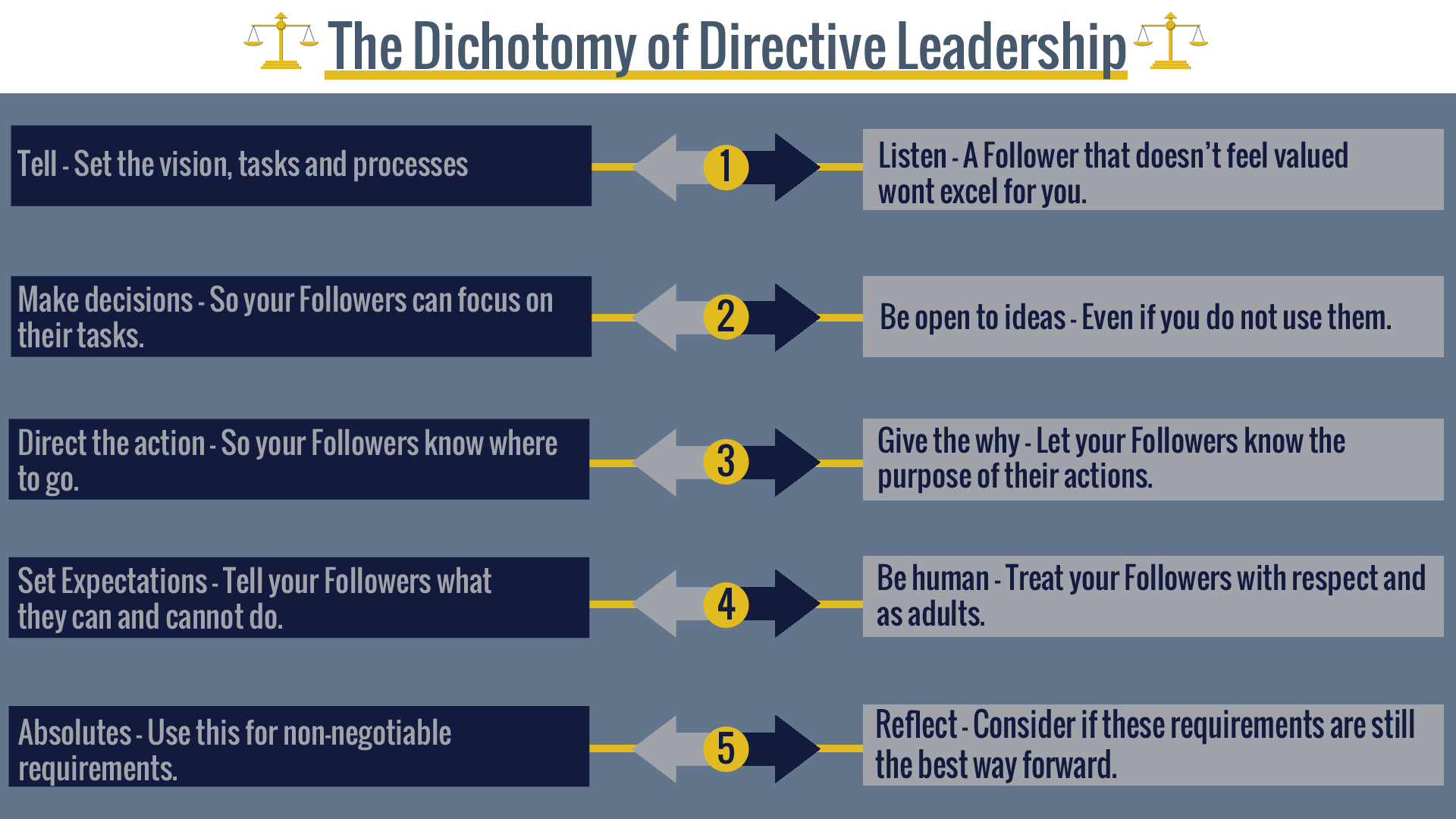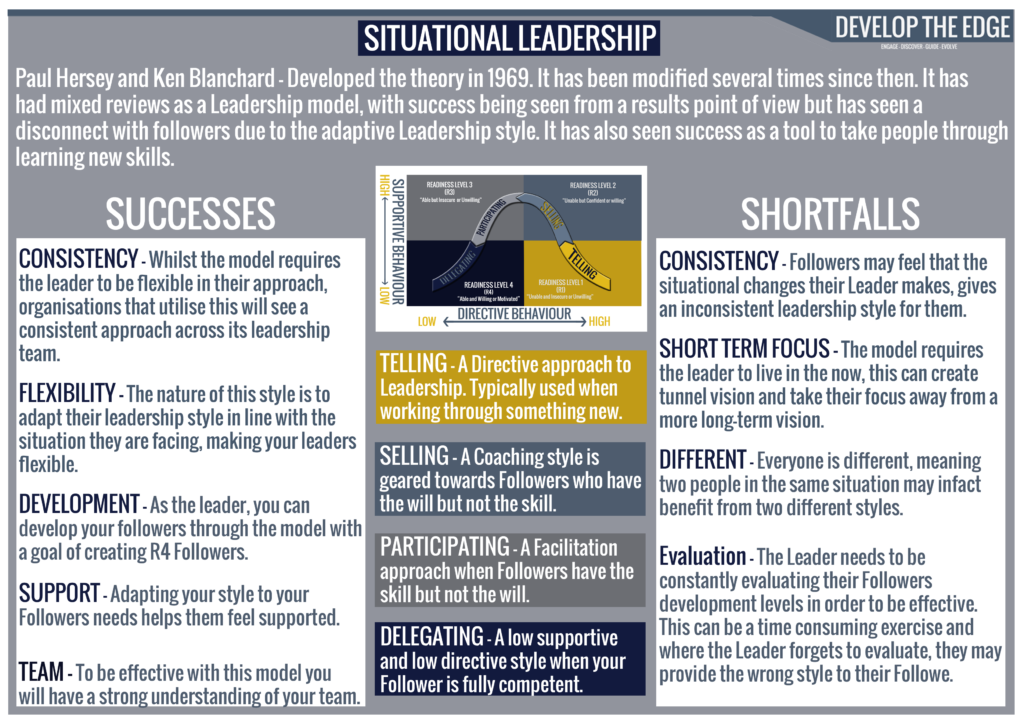If you:
- Feel like you aren’t progressing when it comes to planning and achieving your goals
- Get lost when structuring a coaching conversation
- Want to help people achieve their potential but you just aren’t sure where to start
This article should be packed with value for you.
Based on John Whitmore’ book ‘Coaching for Performance 5th Edition’, we discuss WHAT the model is and HOW to use it. If you want to learn more about the benefits of the GROW model, consider subscribing to our blog as we will be discussing this with you soon!
For now though, let us begin to explore this widely used model and discover what it could do for you.
What is the GROW model?
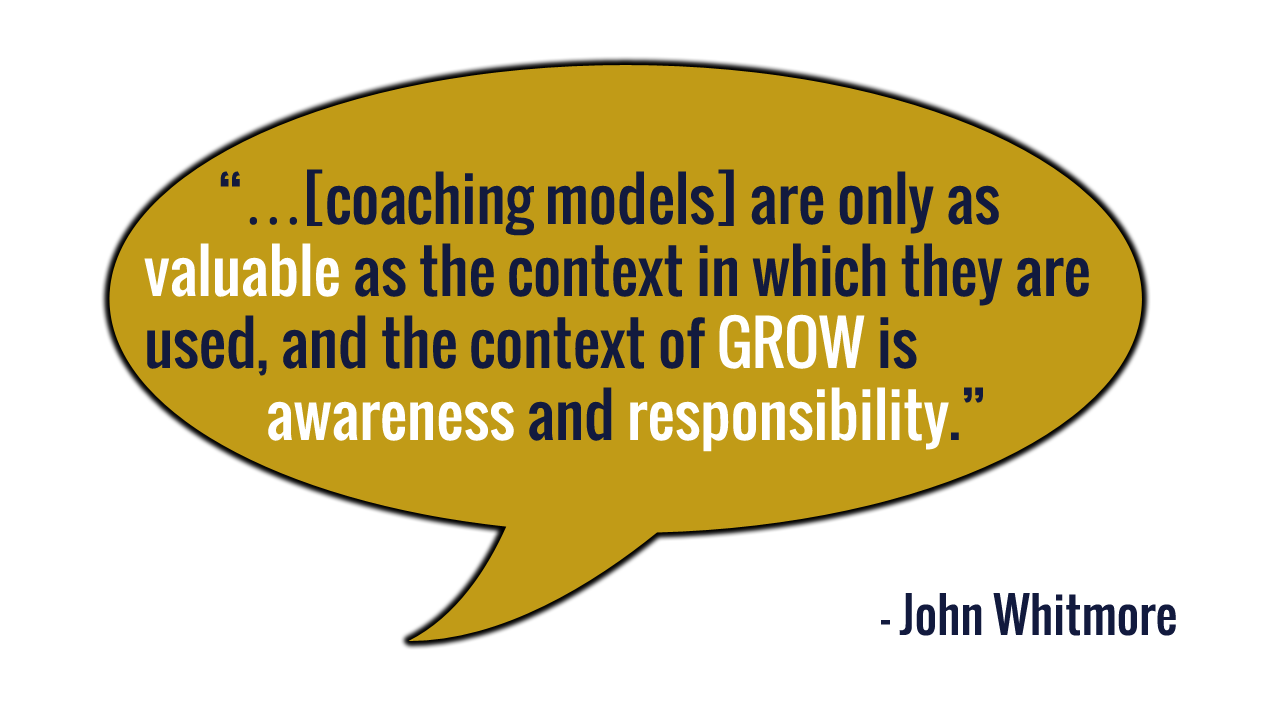
The GROW model was created by John Whitmore as a tool to help coaches and leaders have effective conversations with their colleagues. Whitmore advised that the model should be used similar to a journey planner – find out where you want to go, understand where you are and plot the best path to get there.
The acronym GROW is broken down in to 4 easy to follow steps which stand for; Goal, Reality, Options and Will.
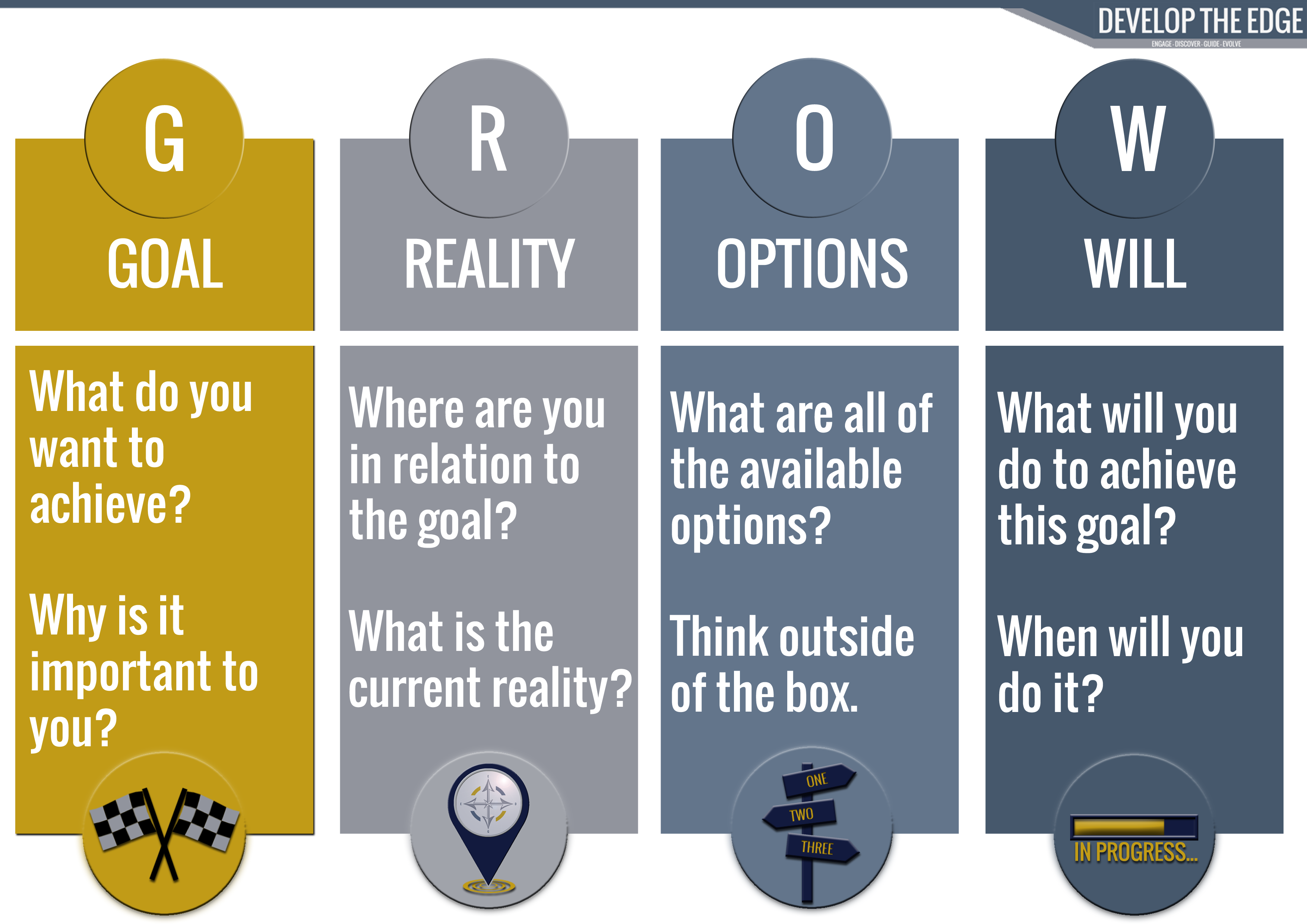
How to use the GROW model

The GROW model is a fantastic tool you can use alongside your coaching and facilitation skills, it gives you a framework to base your conversations around so that they follow a sensible structure. It isn’t a replacement for interactive coaching, so it’s important to stay engaged as you work your way through the model, being flexible in your approach will help the conversation flow and allows you to avoid an awkward and rigid tick box exercise.
Before you launch into understanding your coachees goal, it makes sense to set the scene. We don’t mean brief your coachee on the model but we definitely should explore the purpose of the coaching session. What is the end goal of the session and why is it important? Whether you have a specific agenda for the coaching sessions or not, it’s always a good idea to ask your coachee what they would like to get out of the time you are spending together.
Consider these simple, thought provoking introduction questions:
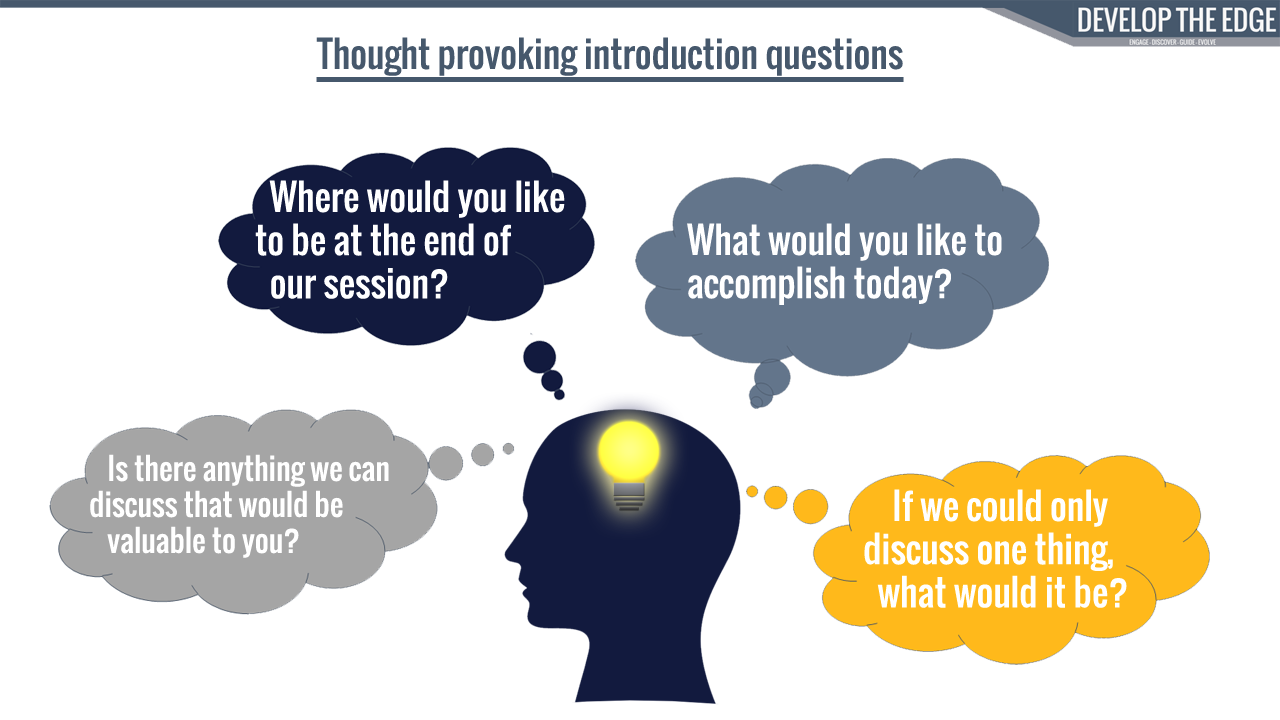
Do you have any impactful questions that you like to open a session with? Connect with us @DevelopTheEdge on Twitter or LinkedIn and let us know how you start your sessions off powerfully!
With the scene set, we can look at how we can use the model to guide our coaching conversations. The first part of the model we are going to engage with is Goal.
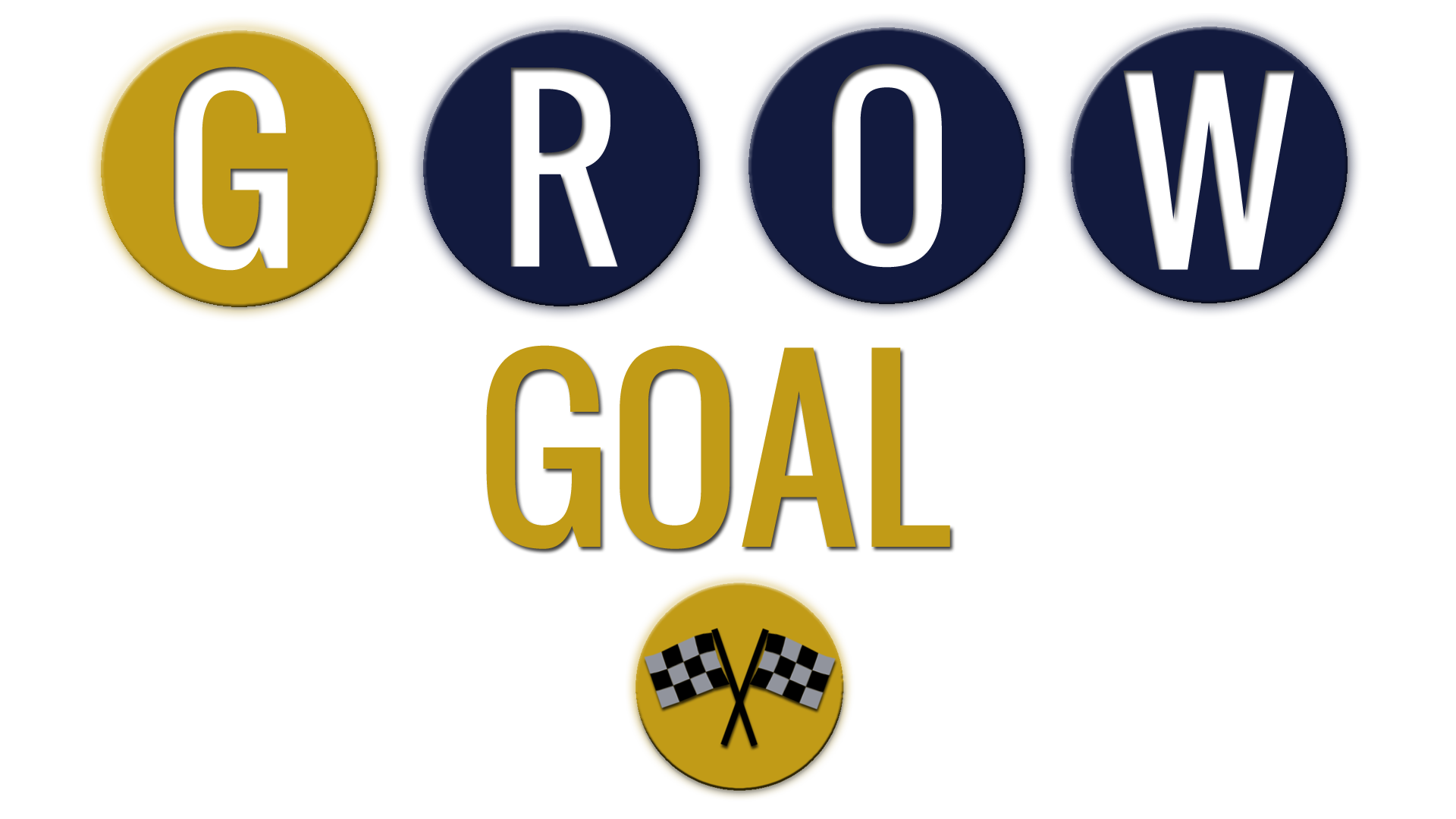
The first part of the model is extremely important as it focuses on what is to be achieved. Much like with Locke and Latham’ research, Whitmore advises that the goal needs to be stretching for the coachee. When we look at goal motivation, we see that when a goal is too easy or too hard, we give up on it because it is either not valuable (too easy) or not worth the effort (too hard).
If you only have a short amount of time to coach with, consider asking your coachee to have a goal in mind before the session.
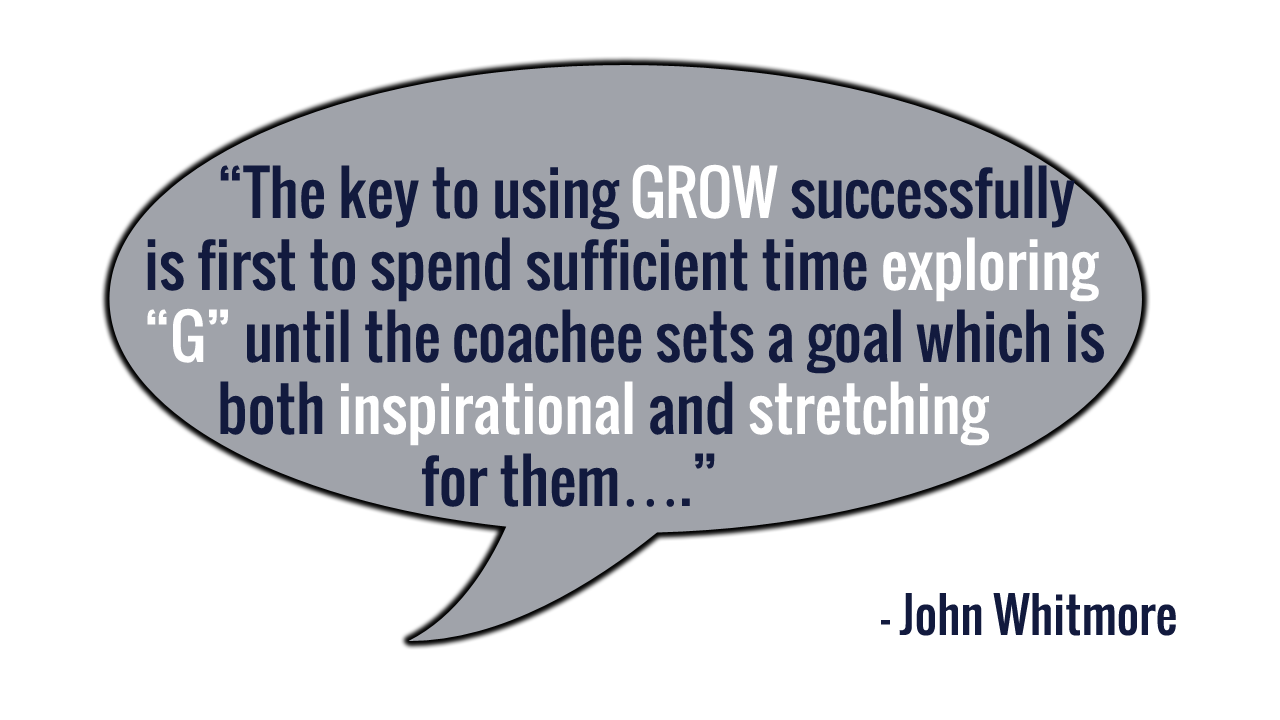
Whitmore identifies 4 different types of goals:
- Dream Goals
- End Goals
- Performance Goals
- Process Goals.
The different types of goals can impact motivation levels, goal success and accountability in your coachee so it is important to know which goal we are dealing with at any one point. If for example, your coachee is missing a Dream Goal, they may lack motivation and the inspiration to do their best. If they are missing Process goals, they may lose accountability and lose track of their next steps. Missing a goal type may not bode well for their goals success. With that in mind, let’s explore the 4 types in more detail:
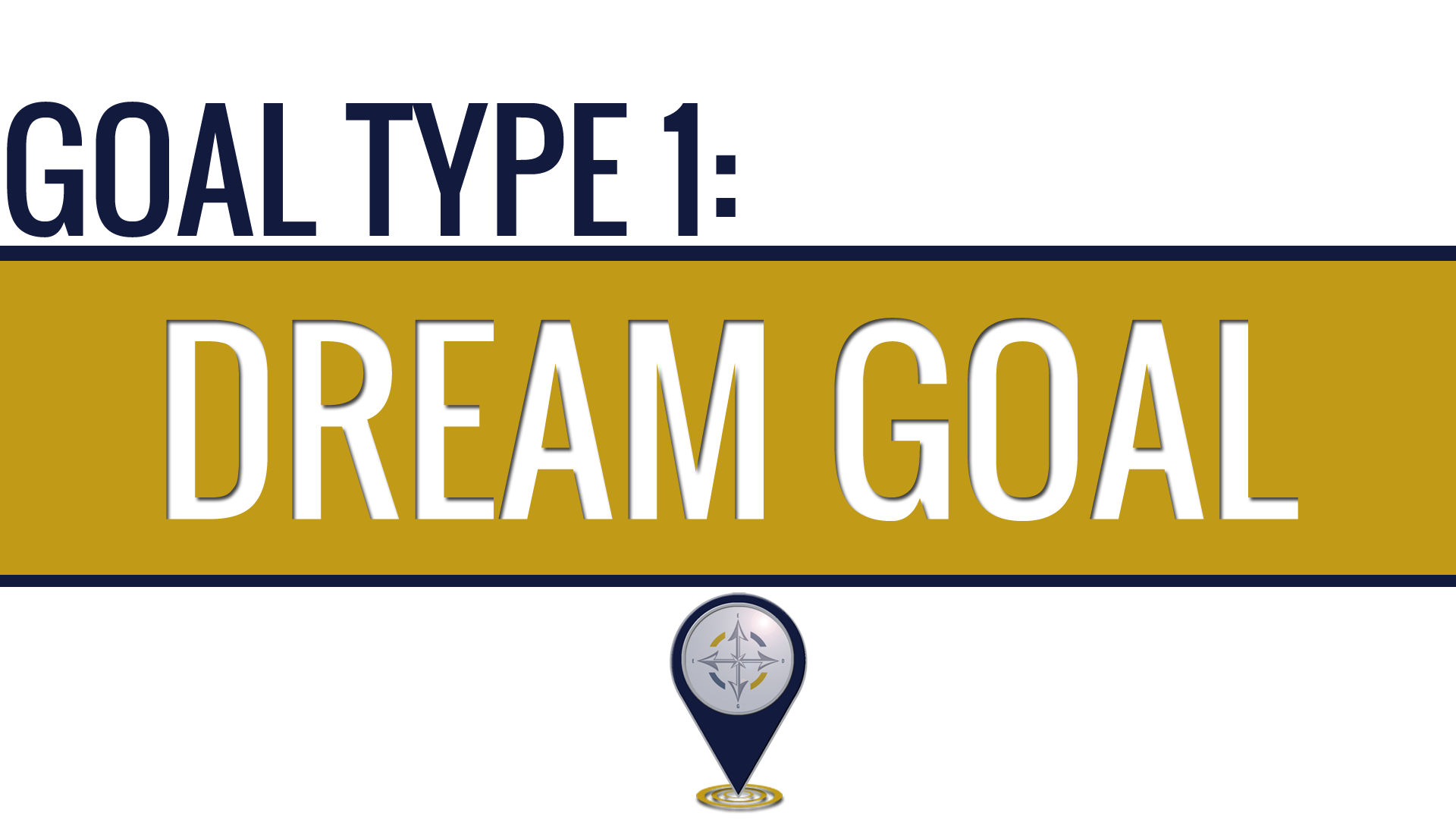
This is the inspiring vision of the future, something that is not yet possible but in time and after a lot of focused effort, will be. This is real big picture thinking, it is a focus on who you want to be and what you want to accomplish.
This is your driving force of the goal and it needs to be exciting, compelling and inspiring. This can take a lot of exploring and reflection – you will likely need to revisit the Goal stage of the GROW model later as you refine your purpose.
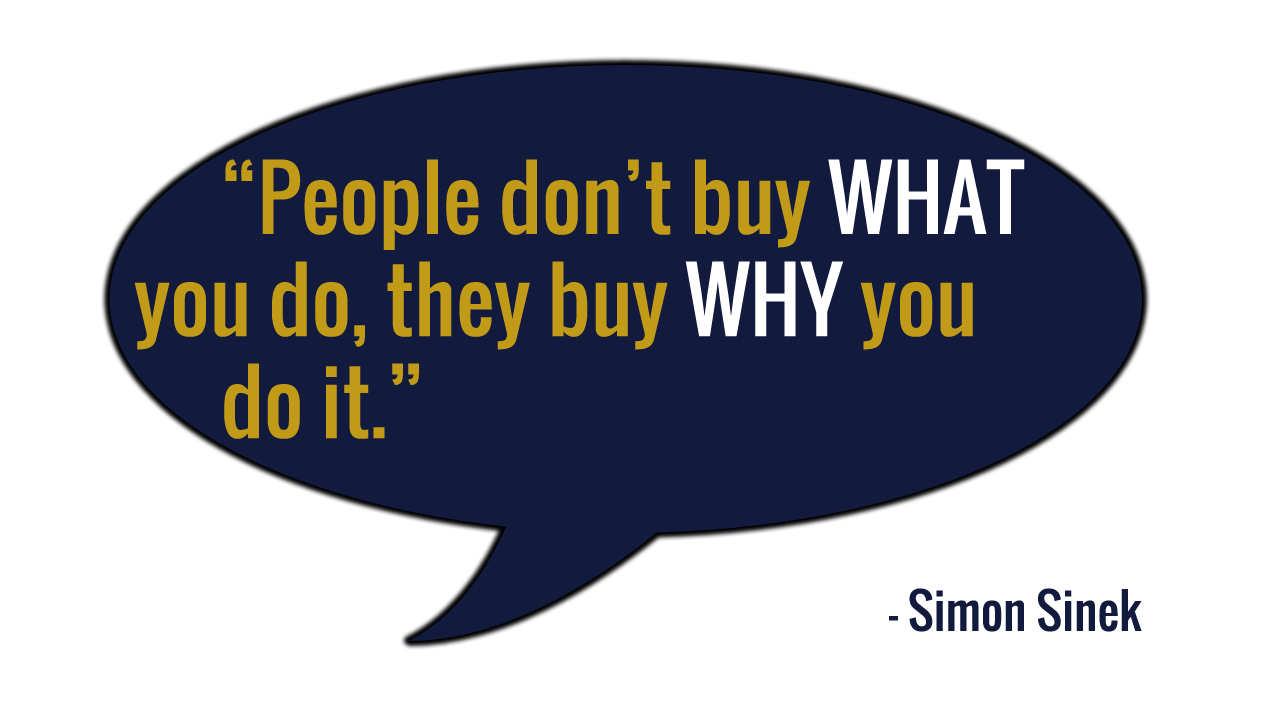
Here are some valuable questions to identify and probe further into a Dream Goal:
- Why do you want to do this?
- What is it that you really want?
- Why do you really want that?
- What is the purpose of achieving this?
- How will your life be different after you achieve this?
- What will it mean to you once you have achieved it?
- Who do you want to be?
- Why do you want to be that future self?
- What will achieving this allow you to do?
- Why is this important for you in the long run?
- How does this link to business goals (where coaching in the workplace)
- What excites you about this goal?
Remember: this Dream Goal needs to be inspiring and motivating.
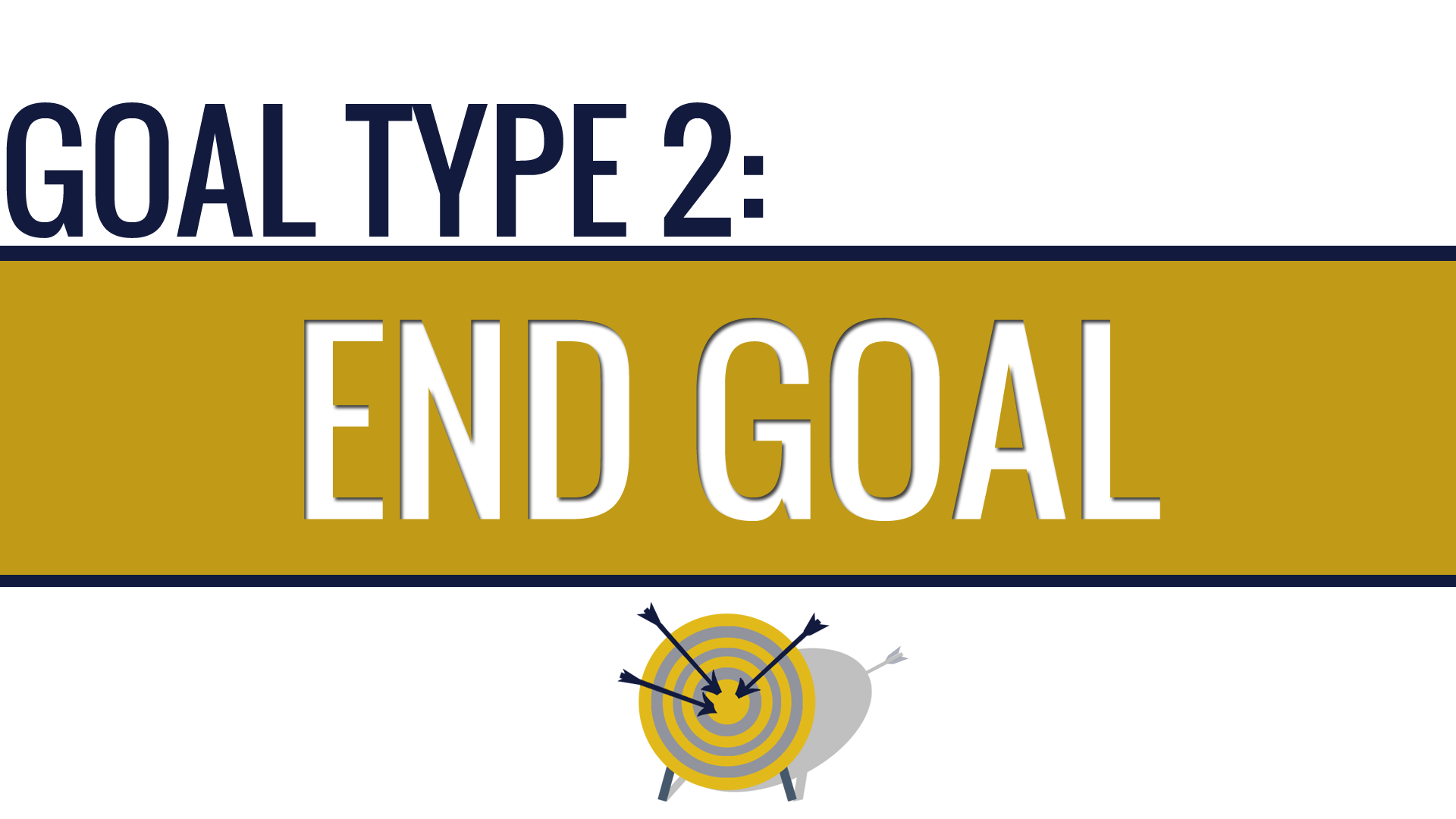
Similar to the Dream Goal, is the End Goal. The main different here is that we are looking for something a more tangible. We are looking less at the abstract dream goal and more at the measurable results we can achieve.
- Consider framing the goal in the SMARTER format, more on that can be found here: https://www.developtheedge.com/securing-success-by-setting-smarter-goals/
- How will you measure the goal?
- What are the conditions for success?
- When do you need to do this by?
- How does this link into the Dream Goal?
- How does this link into your values and mission?
- Could you be more specific on what you want to achieve?
- At this stage is this an achievable goal?
- What would you need to do to make it achievable?
Whilst End Goals are important, they are not 100% in your control, there is typically an element that will be out of your control. For example:
Your End Goal maybe to win a 100m race – Which is measurable as the condition for success is clear. The goal isn’t entirely in your control, think about:
- How hard the other competitors train
- Any inherent skills or abilities they have
- Who will sponsor you
- The weather conditions on the day
- An injury from overtraining
The list isn’t exhaustive but you can already see that this end goal of yours doesn’t just lie in your hands. Instead, you need to figure out how to position yourself to win regardless. What you need then, is a Performance Goal linked to your End Goal.
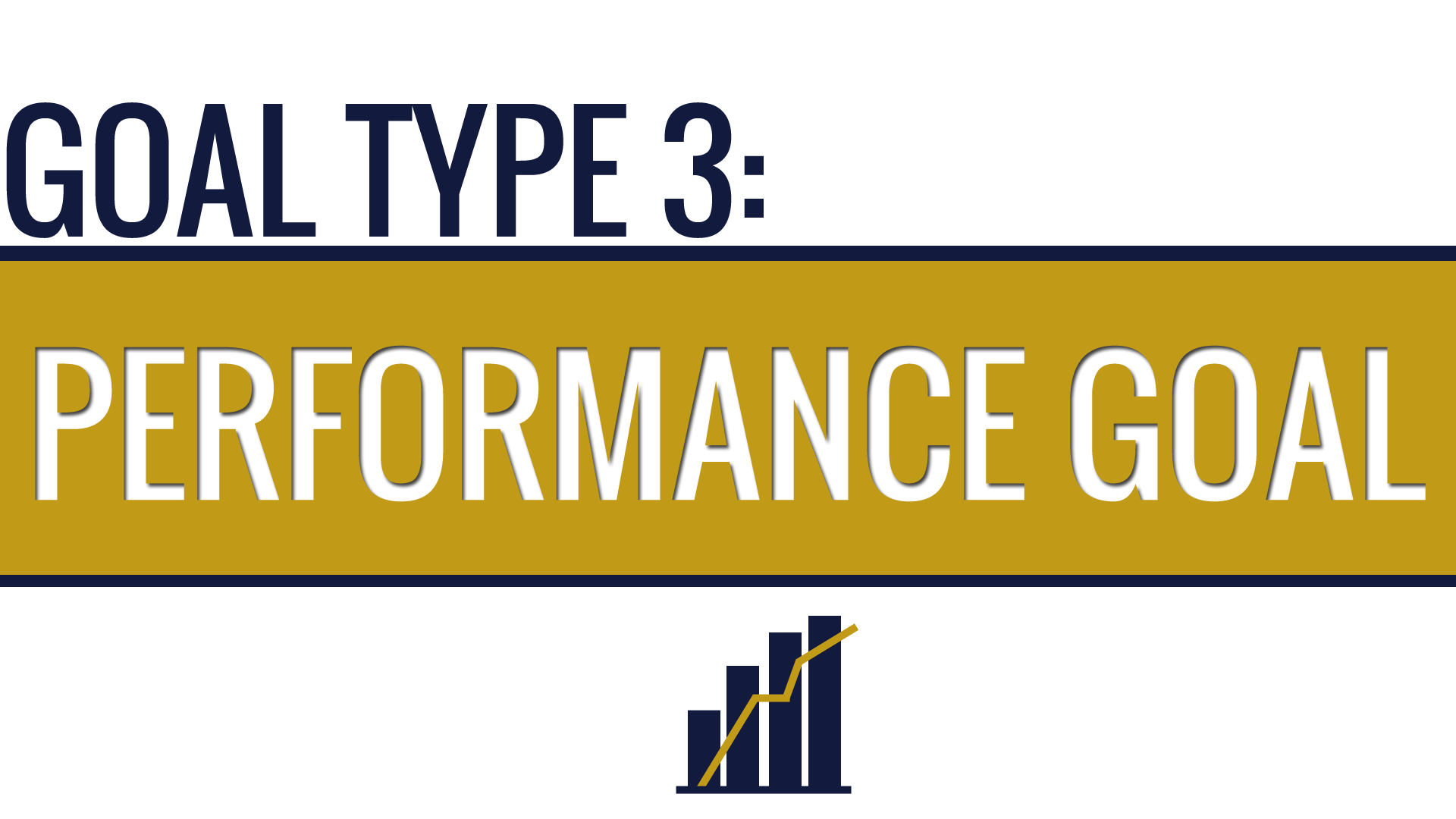
Performance Goals are part of your End goal. These are the goals that you believe will put you in the best possible position to achieve your end goal. They are more specific and more focused on the short term wins that get you to your longer-term End goal.
Your Performance Goals may look like:
- By next week I will be running 100m in 25 seconds
- I will ensure my brand is positive and engaging, by posting about my training, key related topics and speaking to people. This will help Sponsors see value in supporting me.
- I am going to increase my leg strength by 10% over the next 3 months to aid in the 100m sprint
- I am going to look after my body to prevent over training and injury
These goals are all within your control and will put you in the best position to achieve your End Goal. We can still drive to one more area of detail, if we think about the End and Performance Goals as the ‘What’, the ‘How’ outlines the actions we take to achieve it. These goals are called Process Goals as they outline the process you need to go through to achieve your Performance Goals.
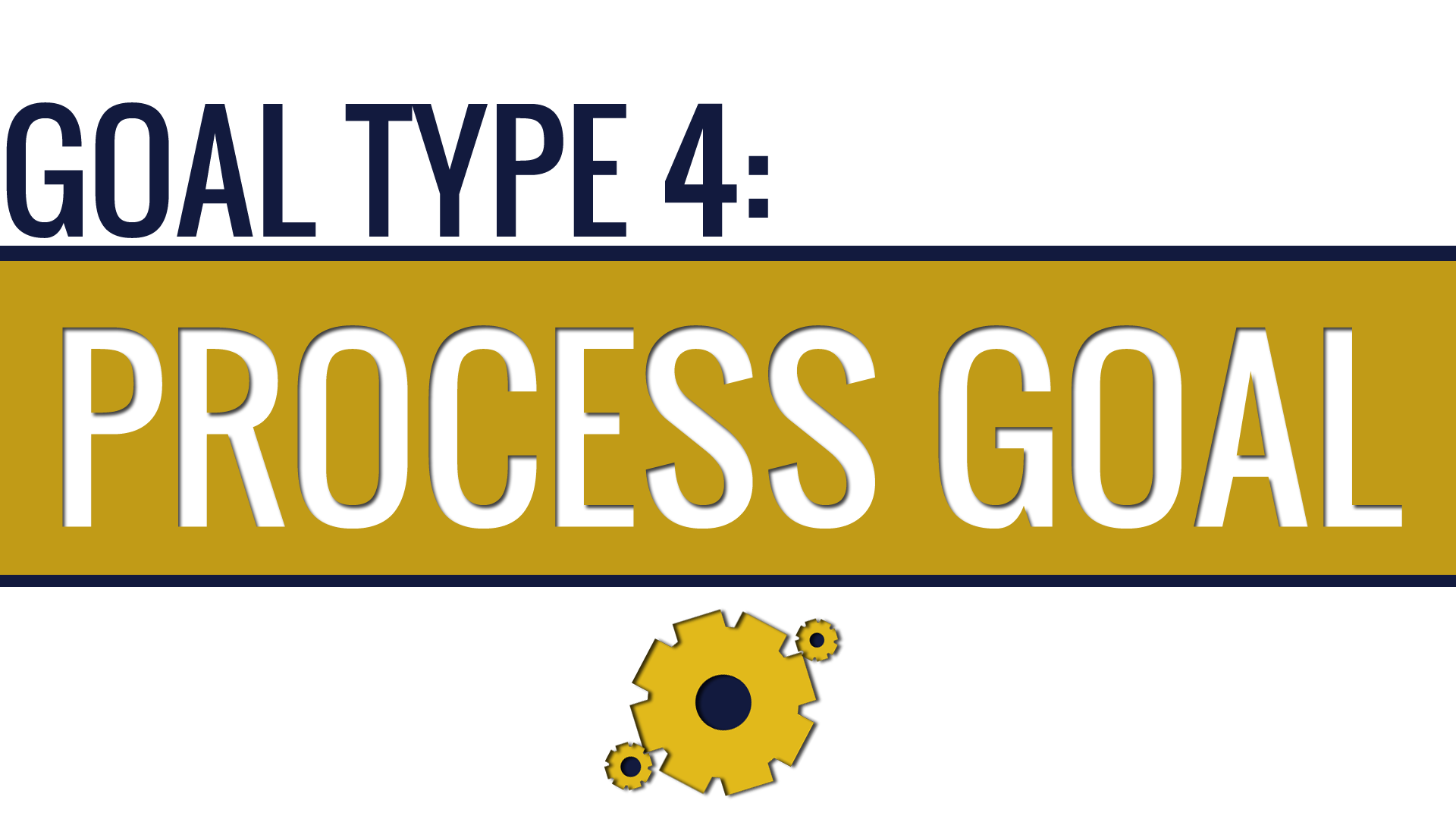
These goals are the specific actions you are going to take to achieve your goal, sometimes referred to as the ‘How’.
Process Goals may look like this:
- I will work out with weights 3 times a week, achieving at-least 1 personal best each session. This will help me to increase my overall leg strength by 10% within 3 months.
- I will post on Social Media once a day – this will help me reflect on my performance and engage with my supporters. I will run these posts through an App that checks how positive and engaging my posts are before posting them.
- I will practice the 30m sprint, 200m sprint and 300m sprint to vary my practice and get to know how my body feels during performance, this will help me with my 100m sprint time.
- I am going to stretch for 30 minutes after each session and get adequate rest each night to help me prevent injury.
Now we have the Why (Dream Goal), the What (End Goal and Performance Goal) and the How (Process Goal) we will be ready to move onto the next step. The GROW model is a flexible approach, if you need to revisit this step or if the goal doesn’t seem quite right here, come back to it. As Whitmore says in his book:
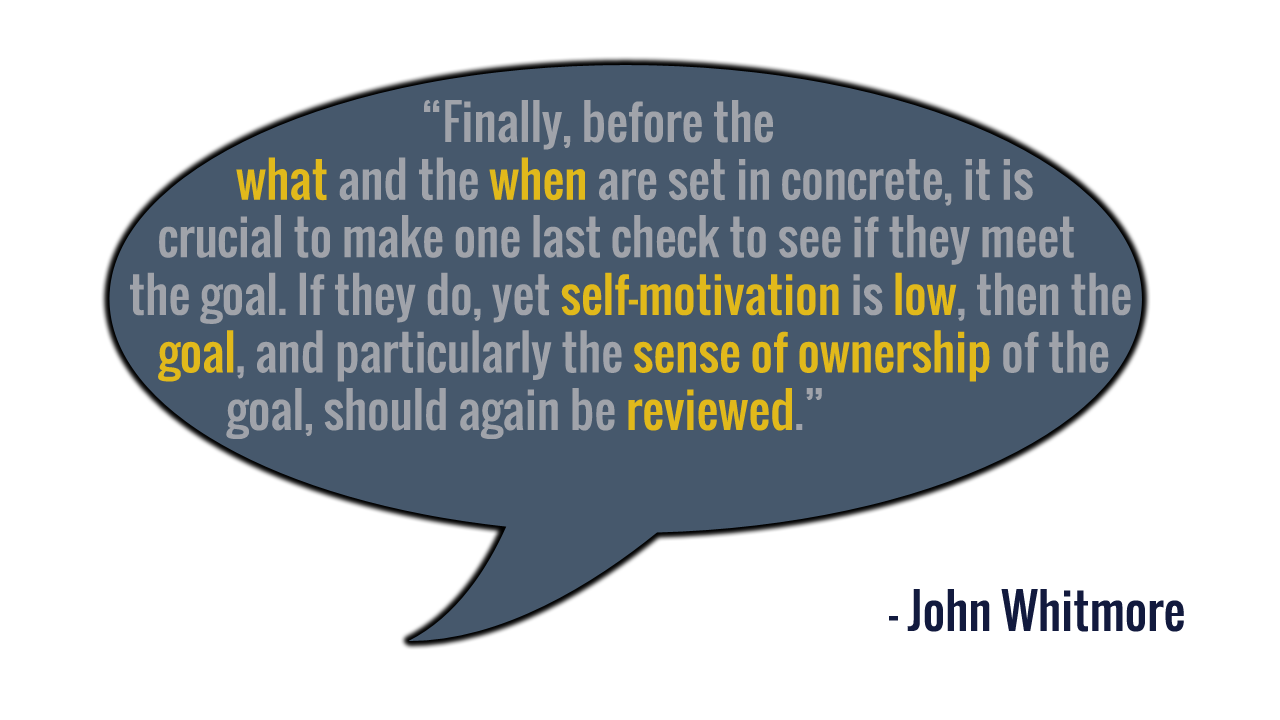
Be mindful not to speed up this process just because of time-constraints. You may invest more time here than intended but consider what is more important: Getting the Goal set within your expected time-frame and later realising it’s the wrong goal or taking longer initially but setting the right goal.
How will this stage help with success?
Evidence shows us that when we find our goal engaging and worthwhile, we are more likely to achieve it!
How will this enable me to become an effective coach?
Practice the questions we have discussed and create your own in order to see the impact great questions can have in a conversation. Remember – great coaches don’t tick boxes, use the questions appropriately – have a fluent and engaging conversation.
With a concrete goal in mind that is inspiring us into action, the next stage we need to look at is Reality.
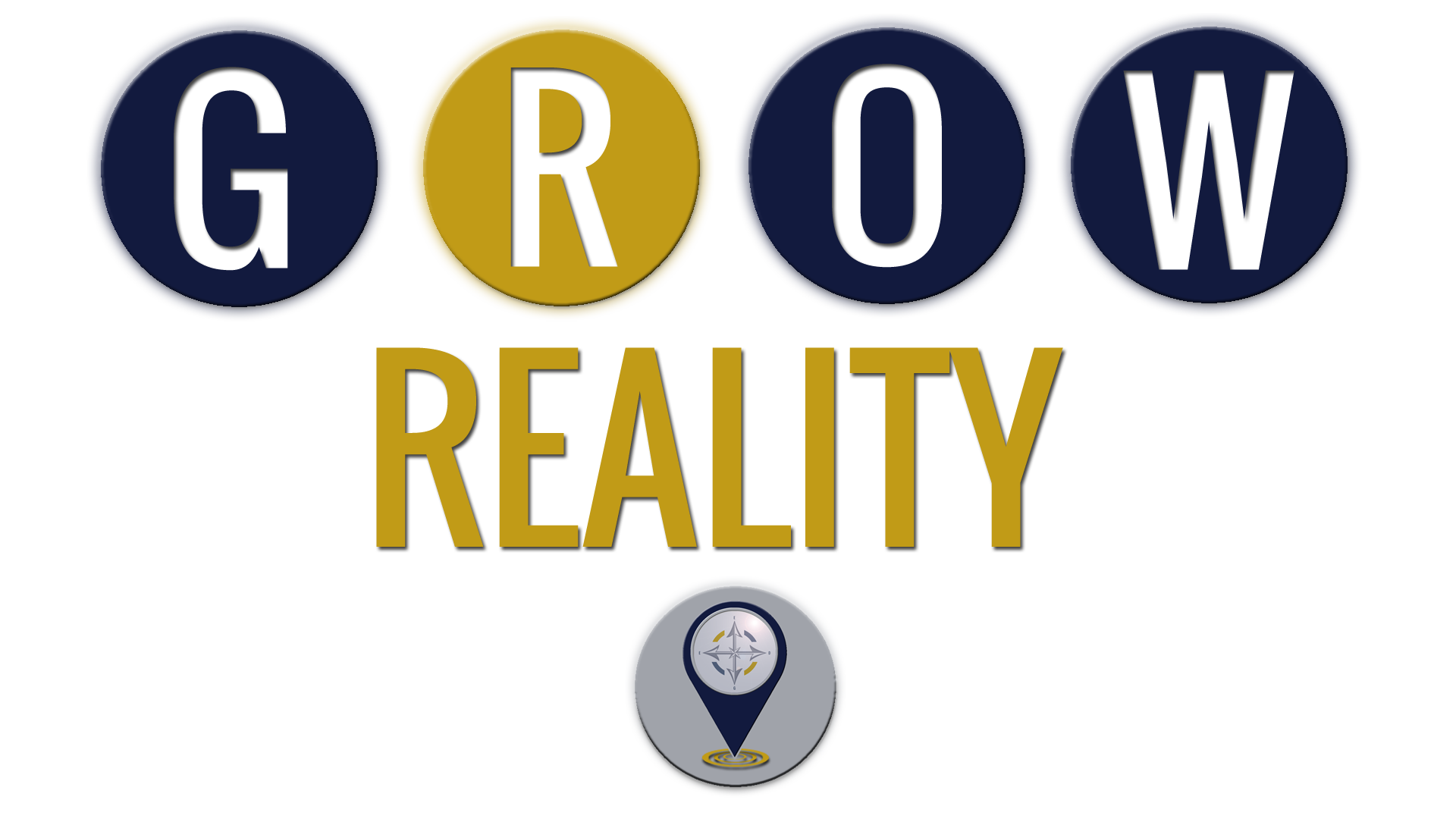
There are two great approaches you can use here, we love these techniques and will cover them in future articles but for now, consider researching them if you are unfamiliar with them:
- The 6 Hats
- The Ladder of Inference
The 6 Hats technique works by focusing on your goal and situation through 6 different perspectives: The Facts, Emotions, Optimism, Critical Thinking, Creativity and Process. This helps give you a well-rounded look at the situation and is great for both facilitated sessions and 1-on-1 coaching.
The Ladder of Inference works by evaluating where on the ladder your thoughts are, the higher up the ladder, the less grounded in reality you are. The bottom rung of the ladder is simply ‘Data’ – Facts with absolutely no beliefs or assumptions attached to them. When attempting to find the Reality of a situation, the bottom rung of the ladder is where you need to be.
One tactic here is to use ‘Chunk-Down’ questioning techniques to probe abstract thoughts and feelings to get concrete answers. Chunking Down is using open questions to get specific answers such as:
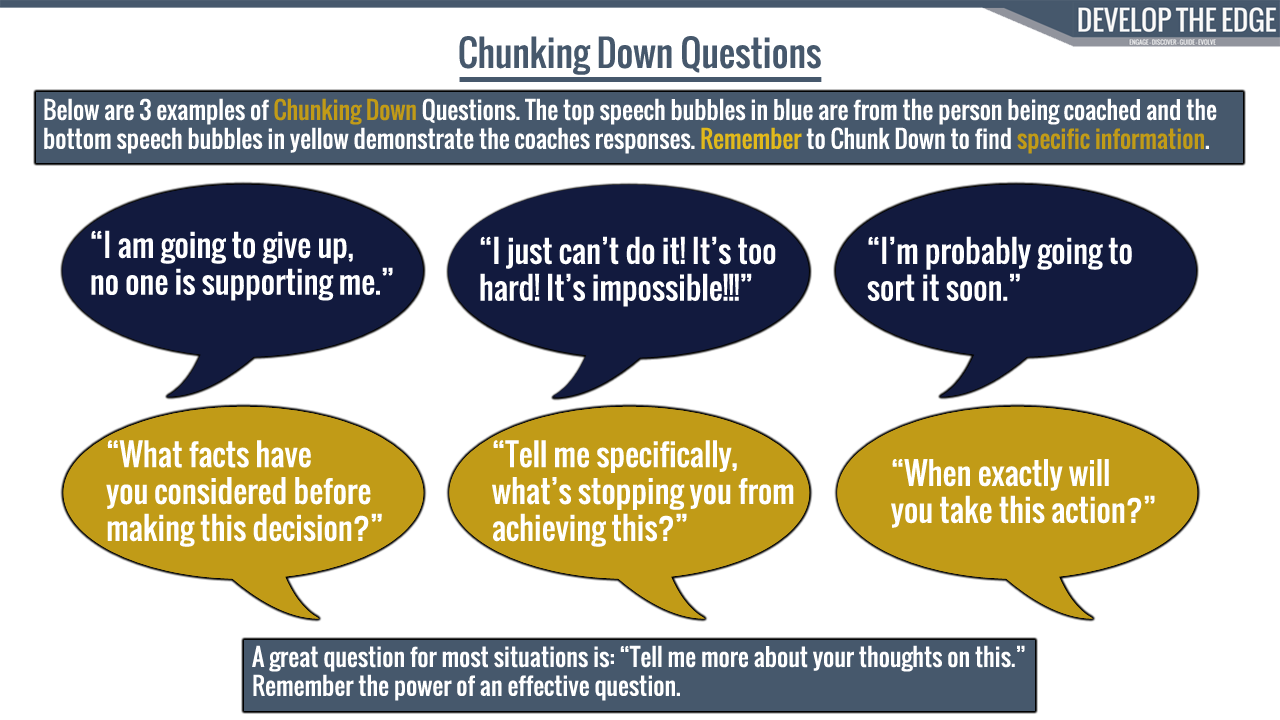
At this stage you are looking to find out:
- Where the coachee is in relation to their goal (close or far)
- What skills they have that will benefit them
- What skills they will need to acquire to be successful
- How Realistic the goals are
How will this stage help with success?
When we understand where we are, it makes it easier to plot the path to where we are going. If you want to know more about how this stage can impact your mental well-being, consider reading our article on the 5 stages of learning: https://www.developtheedge.com/demolishing-doubt-during-the-5-stages-of-learning/
How will this enable me to become an effective coach?
Help guide your coachee through the facts by recognising emotional language and bringing them back to the facts. Build a realistic journey to avoid disappointment and instill accountability.
With a solid grasp on the Reality of the situation and goal, the next part of the model is about the Options available.
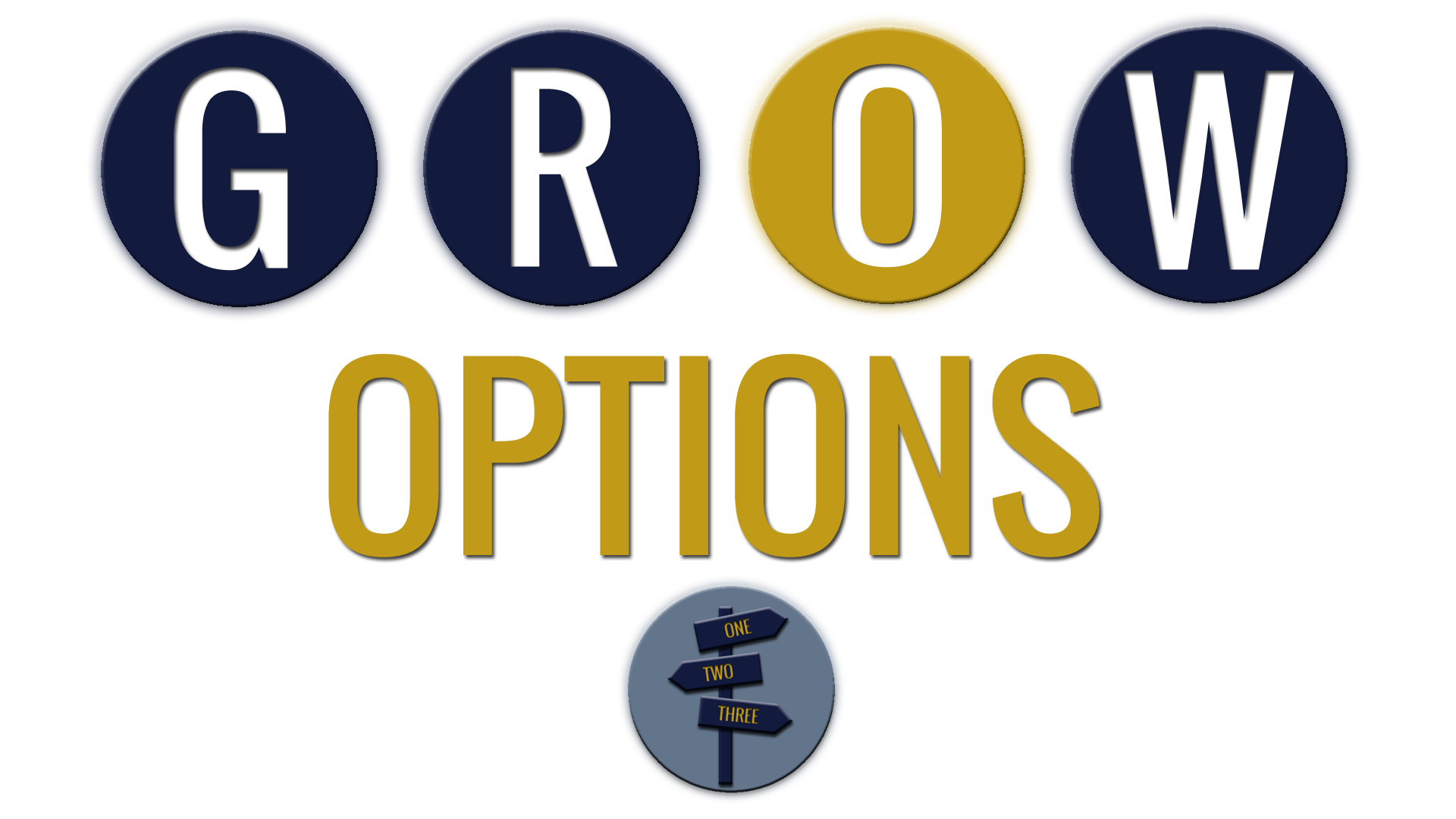
This stage is all about creativity and exploration. You need to approach this believing that there are no barriers and there are no silly ideas. You can use mind-maps, write down lists or just have a back and forth conversation. The important thing here is to get creative, do not allow yourself or your coachee to be constrained by what they believe is possible.
In the below video from Star Trek’s 2009 film, Captain Kirk beats an impossible simulation created by Spock. He did this by installing a virus and technically cheating (although the rules didn’t say he couldn’t do it). Kirk later defends his actions by saying “I don’t believe in no win scenarios.”
Whilst we don’t condone ‘cheating’, this out of the box thinking is key at this stage. It’s this creativity in finding a solution that allows Kirk to beat the simulation. There are many activities that can help you get more creative with your problem solving skills so have a look around! Whitmore suggests the 9 Dot Exercise, which we will briefly cover here:
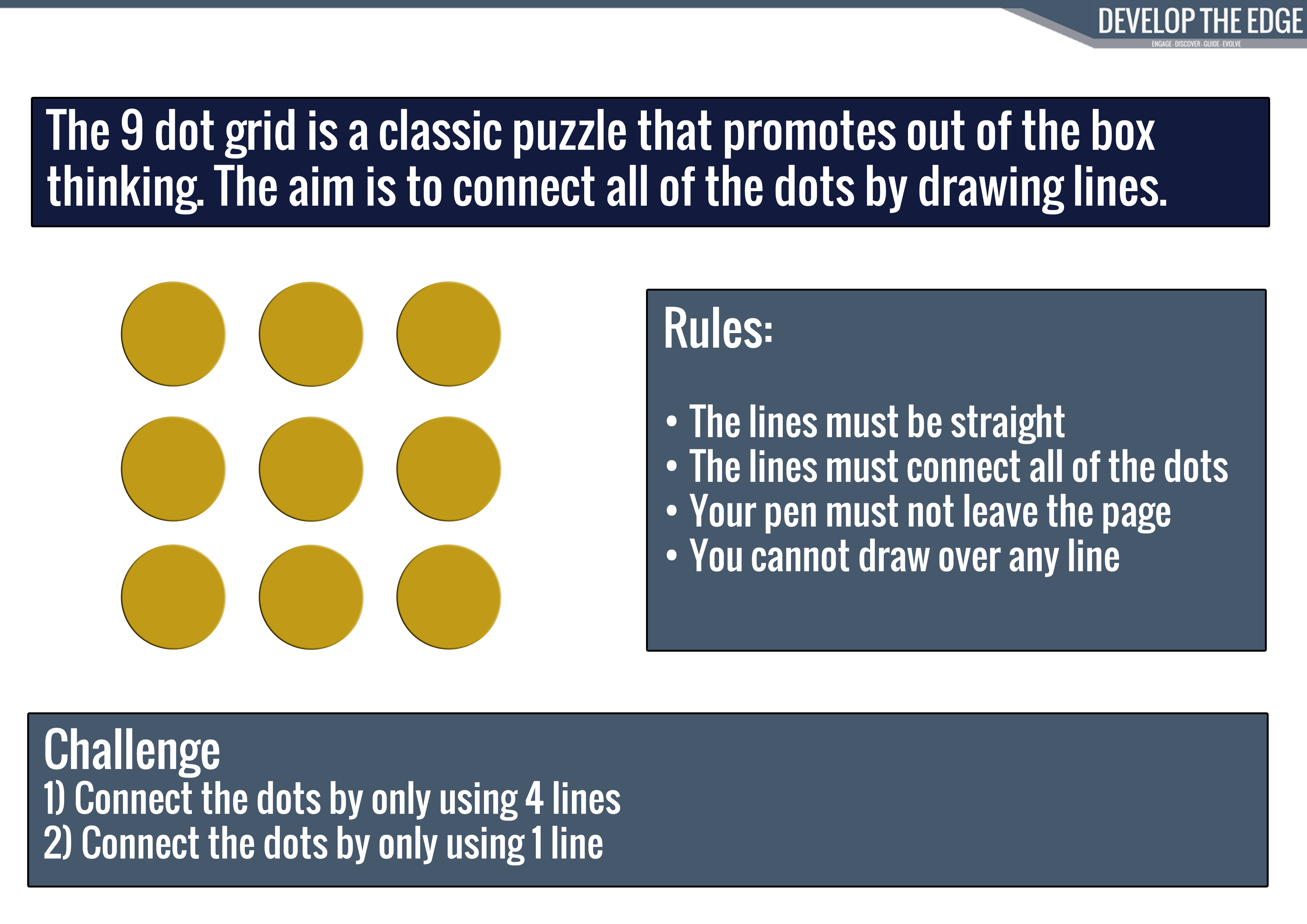
We challenge you here and now to complete the 4 line and 1 line 9 dot image before continuing.
Were you successful?
People can automatically respond to this challenge by saying it’s impossible. We limit our own potential with this kind of thinking. We need to look at all of the options available to us.
If you found it impossible, did I say you couldn’t:
Rearrange the dots?
Cut them out?
Copy and paste them into a better order?
Draw the line through the sides of the dots instead of the centre?
Folded the gaps in the paper to make the distance between the dots shrink?
Use a large highlighter and printed the 9 dots out on a smaller scale?
Get creative and ensure you are challenging limiting beliefs and assumptions here.
Here are some thought provoking questions to ask your coachee:
- What would your future self say?
- If you were me, what question would you ask?
- What qualities would the person you admire bring to the table? How would these be beneficial?
- What could you do if anything was possible?
- If budget wasn’t an issue, what would you do?
- If you had unlimited time to do this, what steps would you take?
- If you were the CEO, what would you do here?
- What attributes do people see in you?
- What attributes would they say are missing?
- What makes someone great at this goal?
Once you have explored all of the options available to your coachee, time to drill them down and review them. Take some time and encourage them to rate each option in terms of what will be the most effective way forward.
How will this stage help with success?
You will have more ideas in your head than you can ever really know, its about getting creative and finding solutions. This stage can help get you outside of what you think will work and push the boundaries on what is possible.
How will this enable me to become an effective coach?
This is a full-on facilitation session, use probing questions to explore ideas and ensure you stay out of judgement. Be encouraging but curious, explore all answers given to help your coachee find the best way forward.
Now that all Options have been explored, the next part of the model is about having a specific way forward and is called Will.
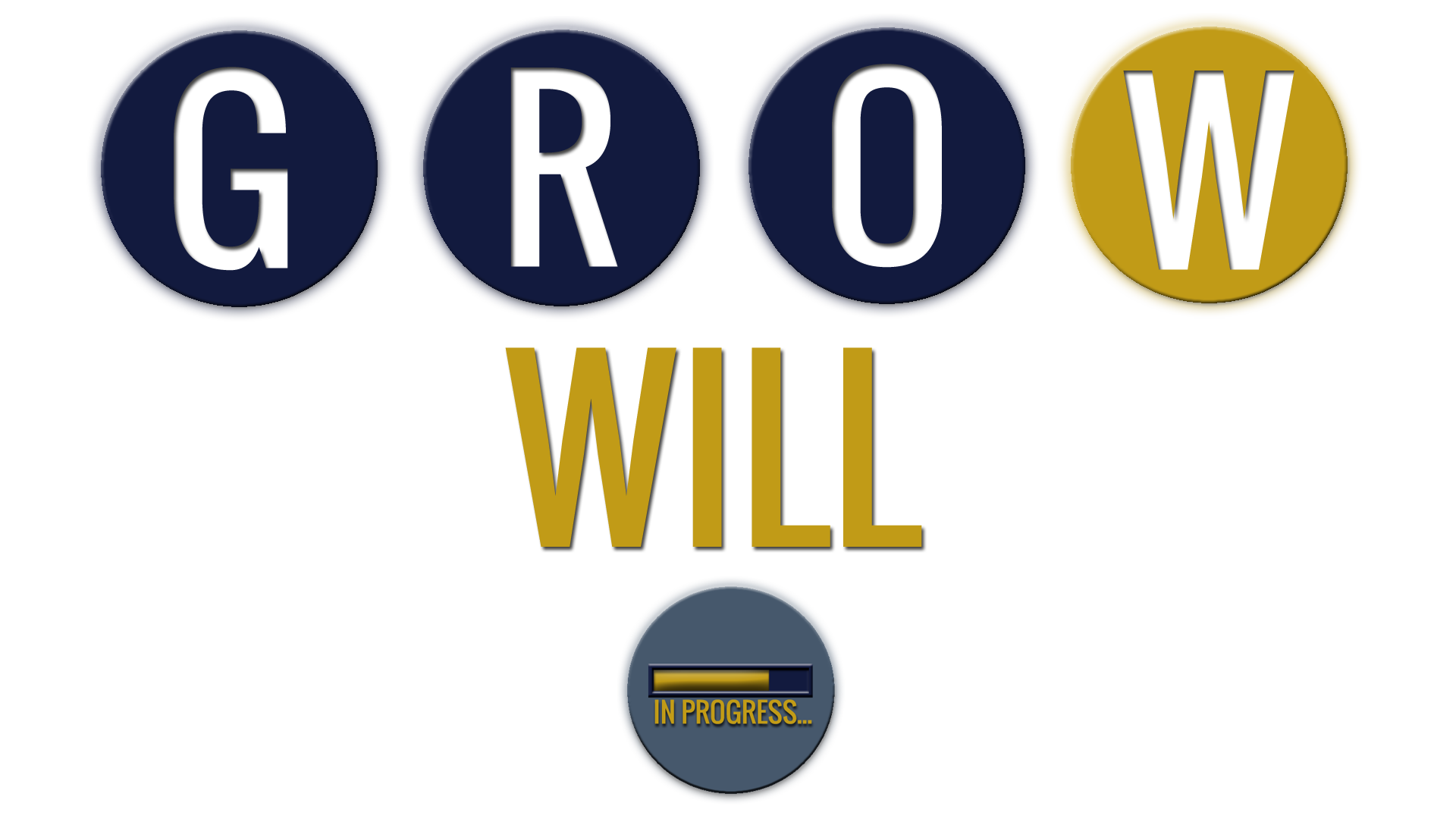
This stage focuses on accountability.
You have discovered your goal, understood the reality and engaged in finding options. The decision now needs to be made, ask the simple question: ‘What are you going to do about it?’
Whitmore suggests three simple questions to boost accountability and action:
- What will you do?
- When will you do it?
- How will I know you’ve done it?
These questions will help give your coachee a concrete action plan – that they have created themselves. We know as coaches that in order to feel connected to a goal, it needs to come from the coachee – not the coach. Let your coachee tell you the answers and set their own path towards the goal.
The questions don’t need to stop here though, always let your coachee guide the conversation, questions are tools – not tick boxes. Here are some other considerations to discuss with your coachee upon setting your concrete plans:
- Are there any obstacles for you to achieve this? If so, how can you manage them?
- What support will you need?
- How will this help you achieve your goal?
- Do you have any other thoughts?
- If you realise the goal will be delayed, when will you let me know?
- How committed to this goal are you?
With the way forward set, it’s a good idea to schedule in a review meeting or meetings to see how your coachee is getting on. It’s important to remember that you need to stay out of judgement here – you are spending time with your coachee to see how you can support their progress.
When booking in review and feedback meetings consider the following:
- How frequent they need to be (daily, weekly, fortnightly, monthly, quarterly etc)
- Where the meetings should take place (face to face, phone, video call)
- Keep in mind the role of a coach and be: supportive, challenging, open and understanding.
- Use this as a learning and growth opportunity for your coachee
- Consider if the goal is still achievable and relevant, revisit the steps of GROW if required
With your review and feedback sessions set out, you should be in a great position to support and encourage your coachee to succeed.
How will this stage help with success?
This is all about accountability and setting a concrete action plan. This is where you put yourself into action and reflect on what is working. If you don’t look at your progress, what’s working and what could go better, you could be missing ways to become more effective and reach your goal faster.
How will this enable me to become an effective coach?
Ensure that the coachee is accountable and focused on their next steps. Ensure your review meetings are about open and honest conversation. Be candid where you need to but stay out of judgement. A coach supports people to succeed, you cannot support someone whilst you are in judgement.
Summary

To summarise, the GROW model is a useful tool for any Coach or Leader to use. It is best used in conjunction with other coaching and leadership skills than as a strict process to follow.
The acronym GROW stands for: Goal, Reality, Options and Will. At each stage, aim to ask open and judgement-free questions to help your coachee understand their goals, skills and the options available to them.
Let us know what has been most valuable to you about this article and what works well for you when using the GROW model.
Check out the below resources to help you facilitate effective and engaging coaching conversations:
- The GROW model – One Page Guide
- The GROW model – Guidebook
- The GROW model – Template





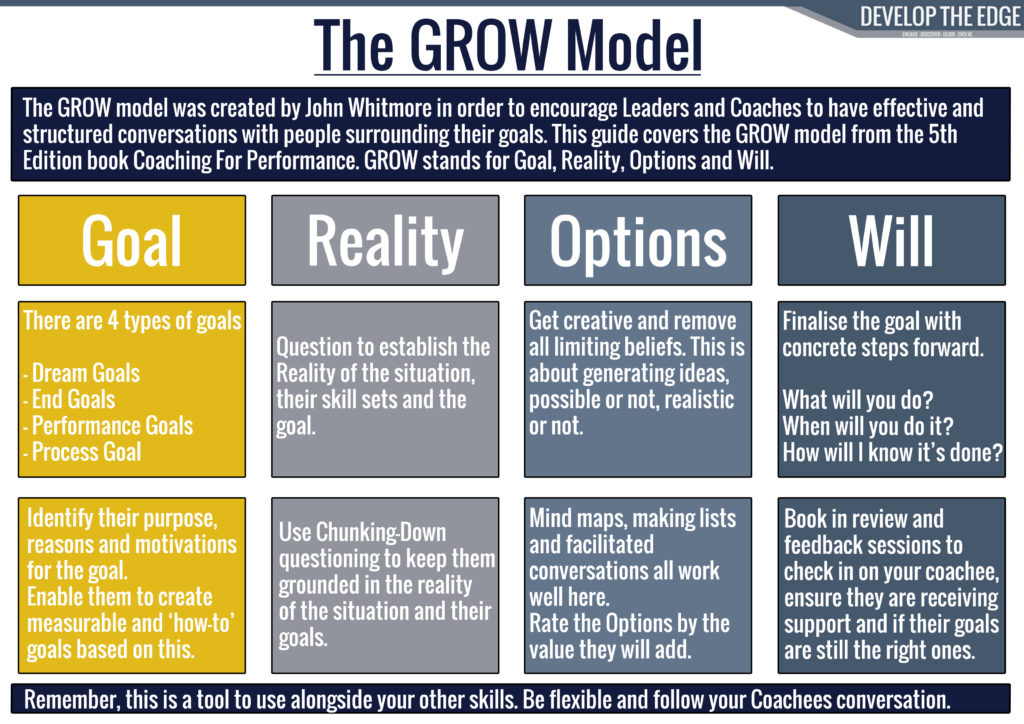

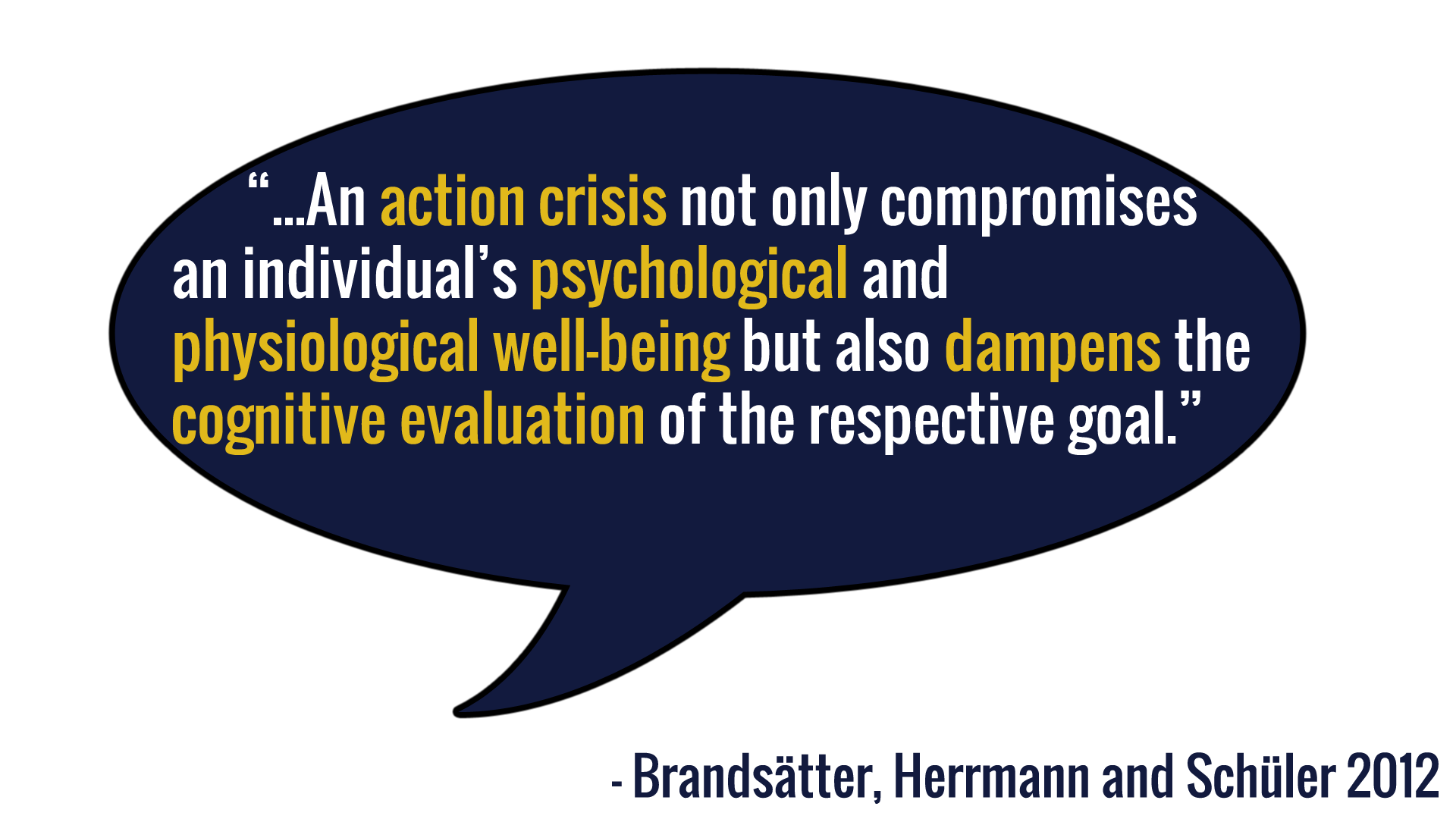
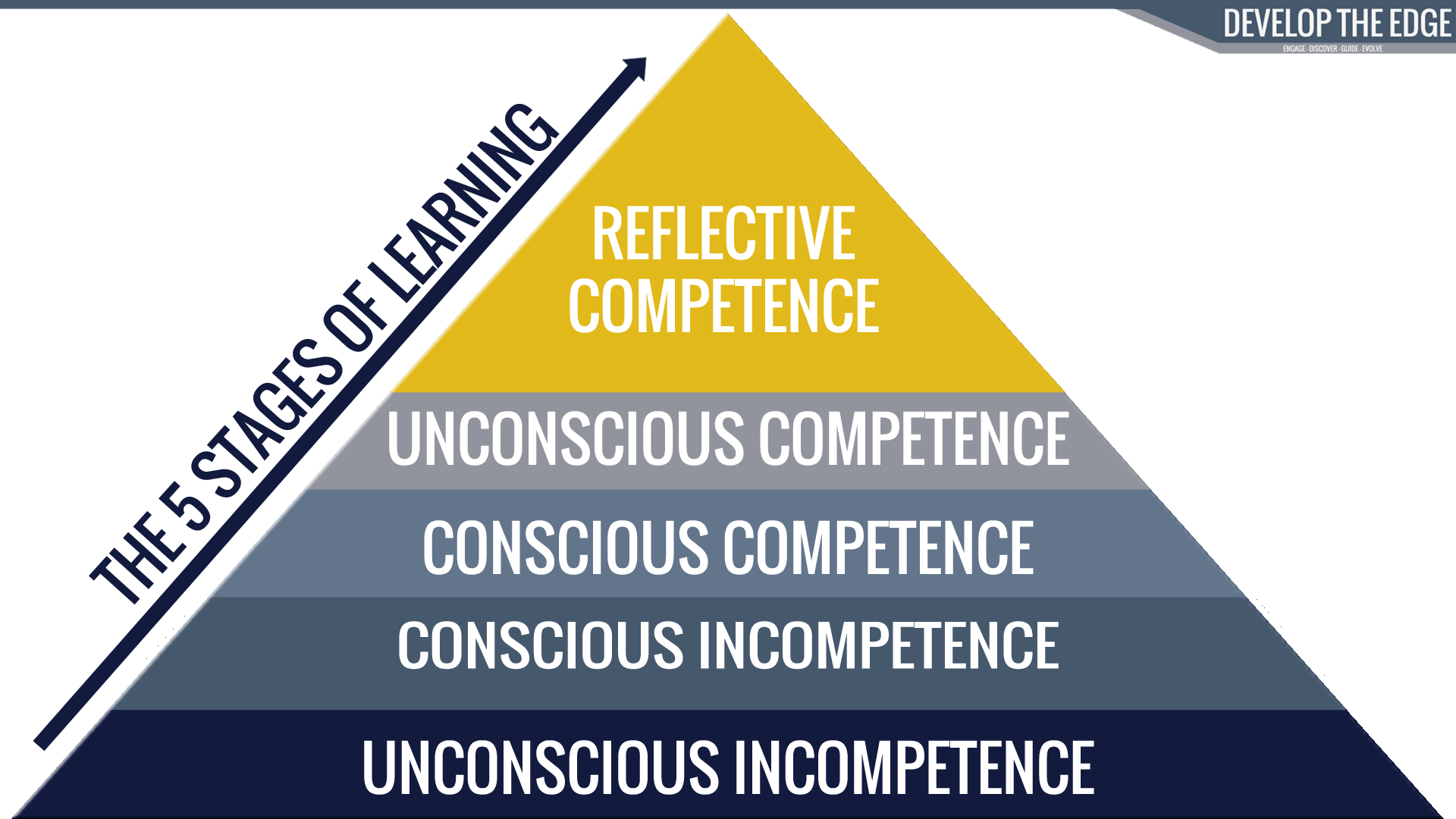
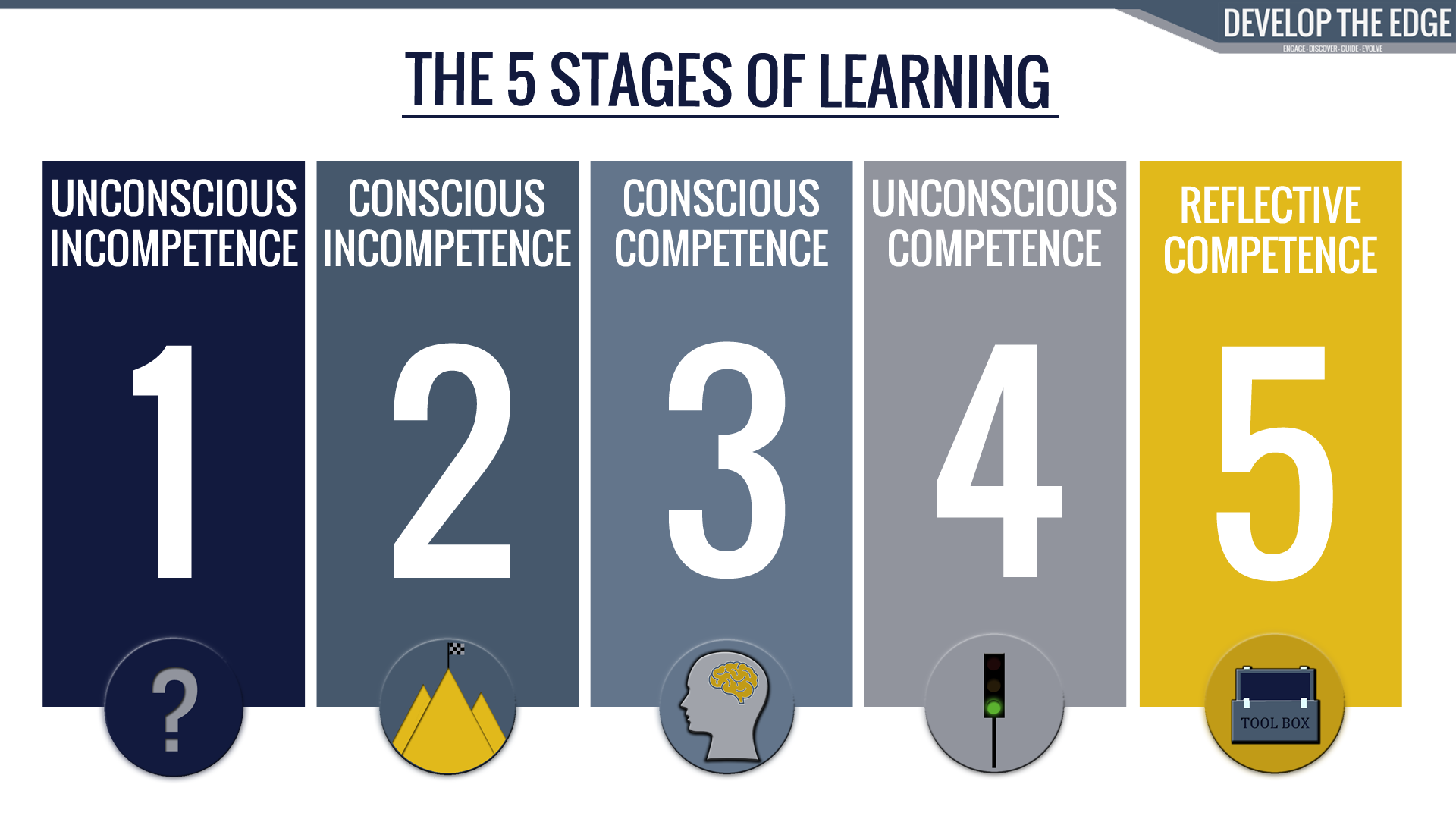
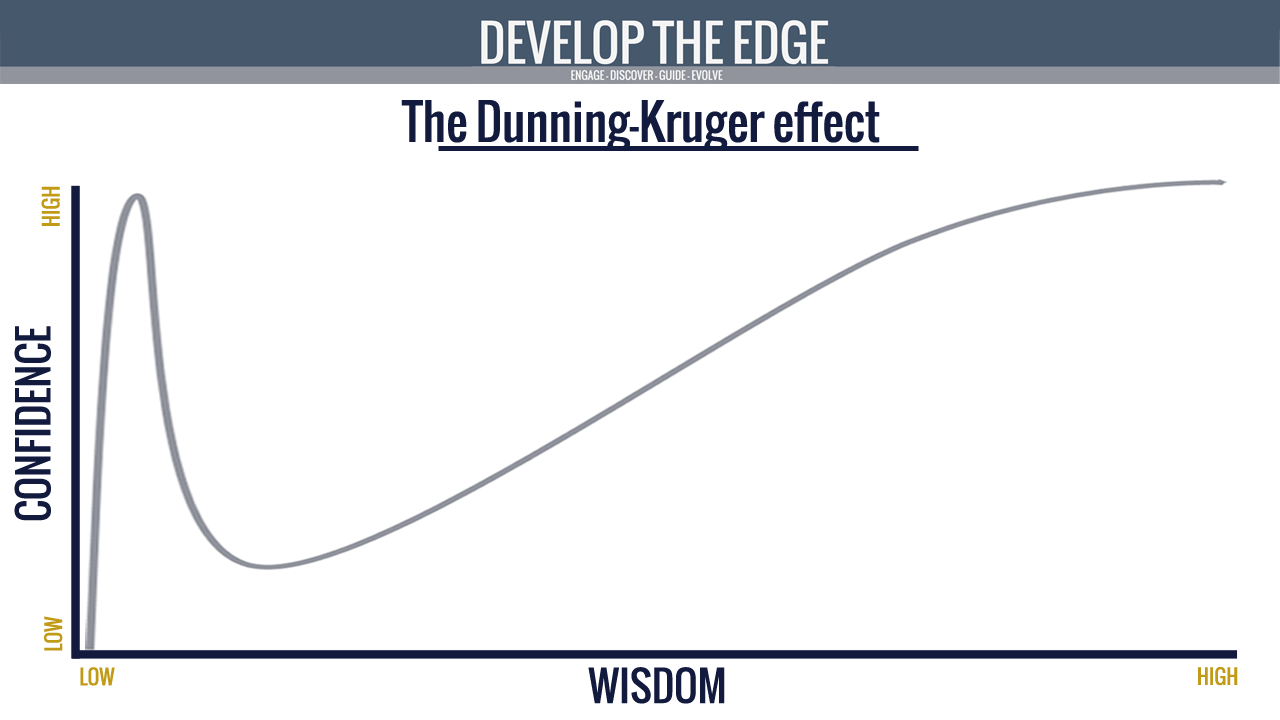

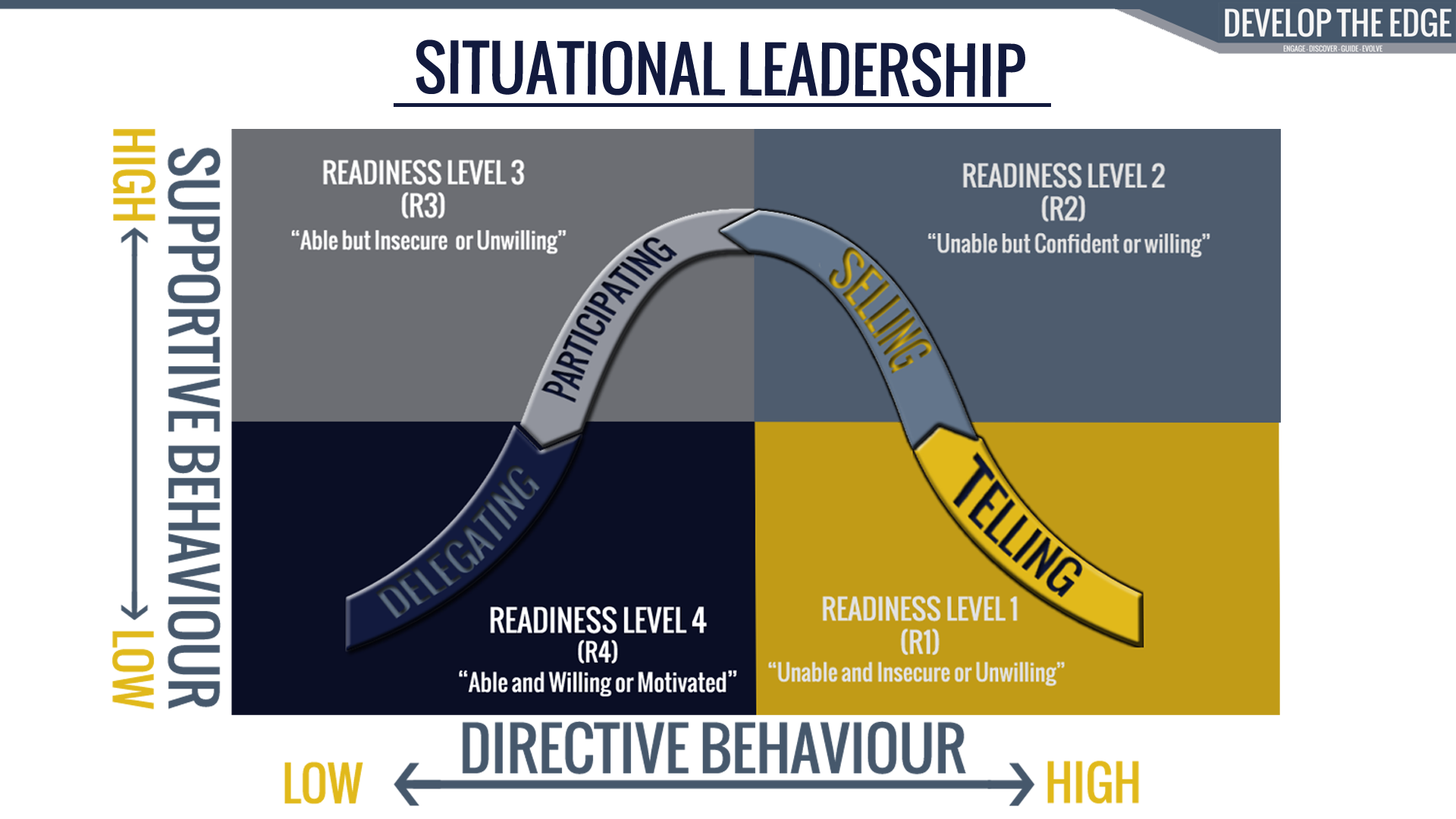

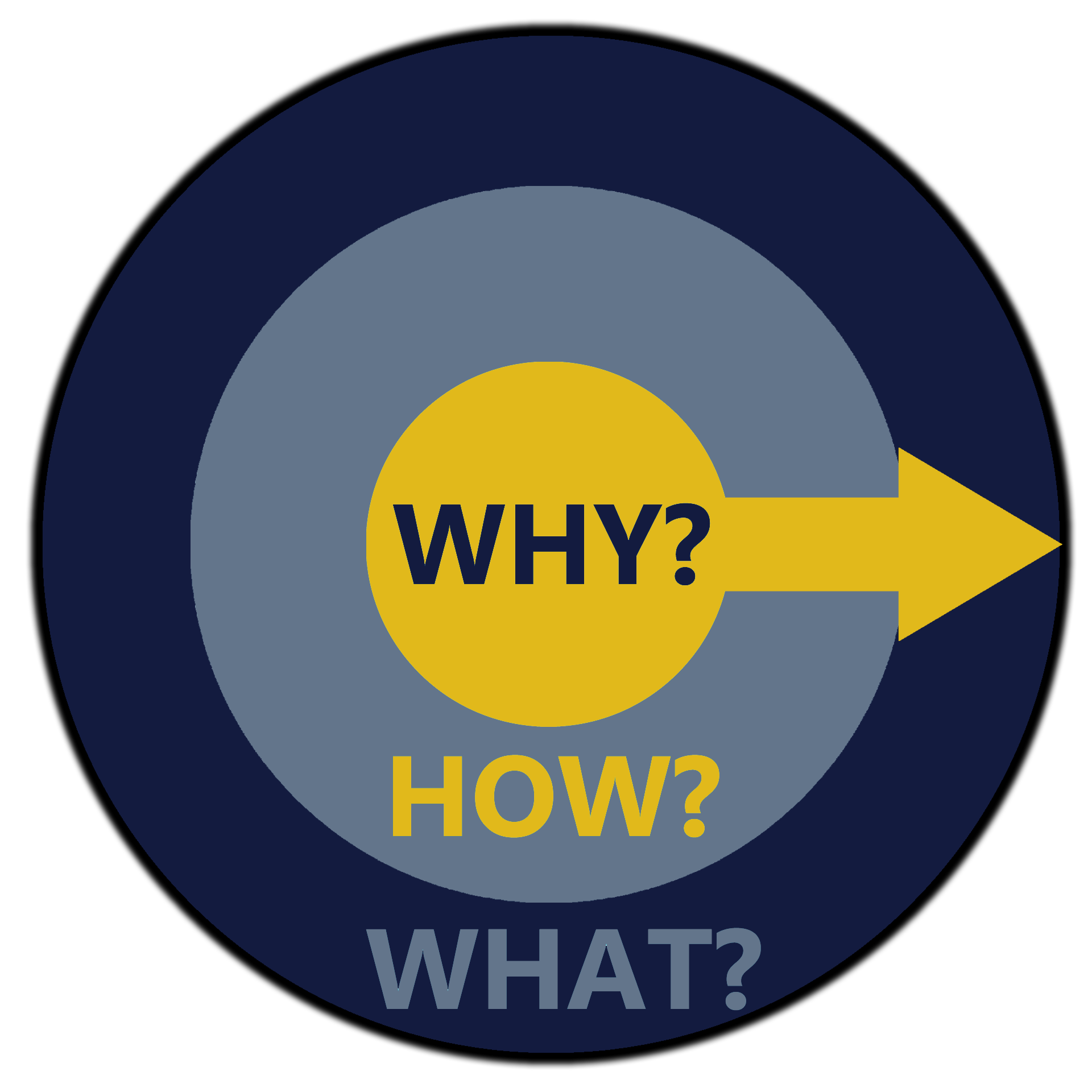


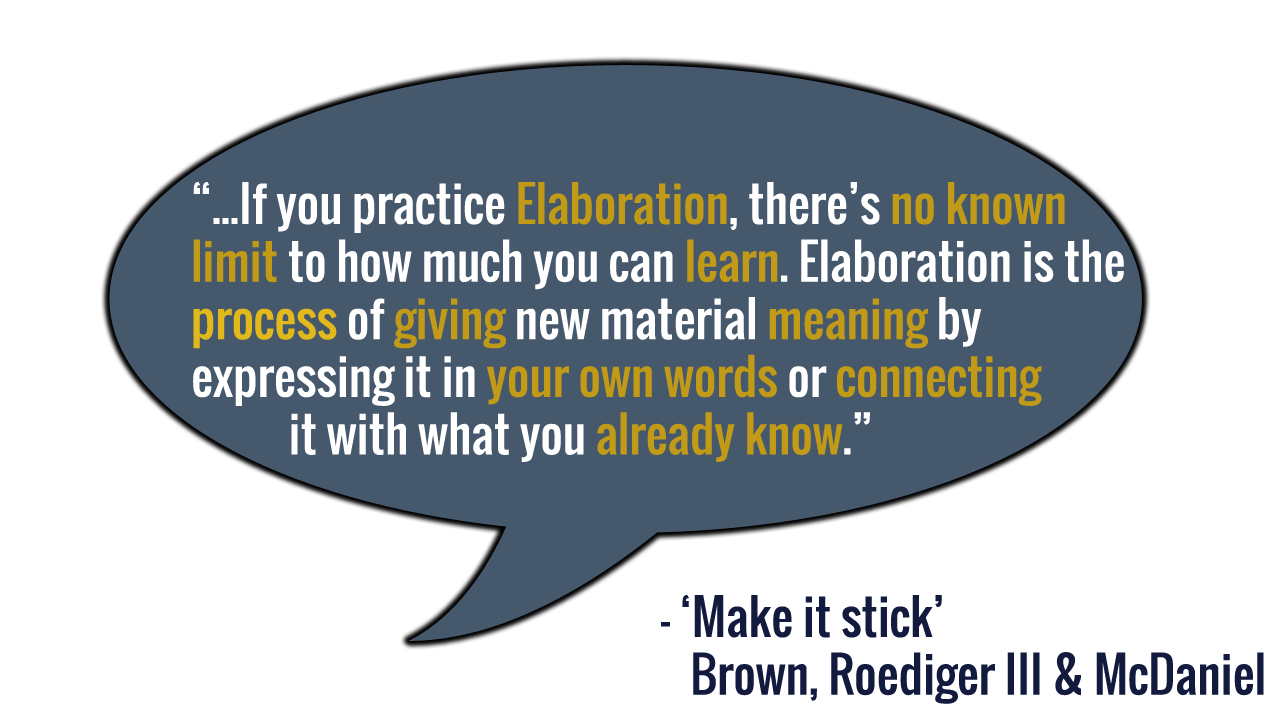




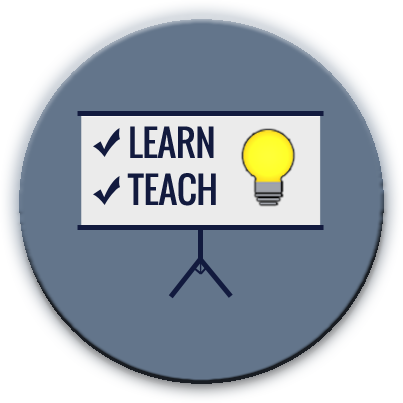
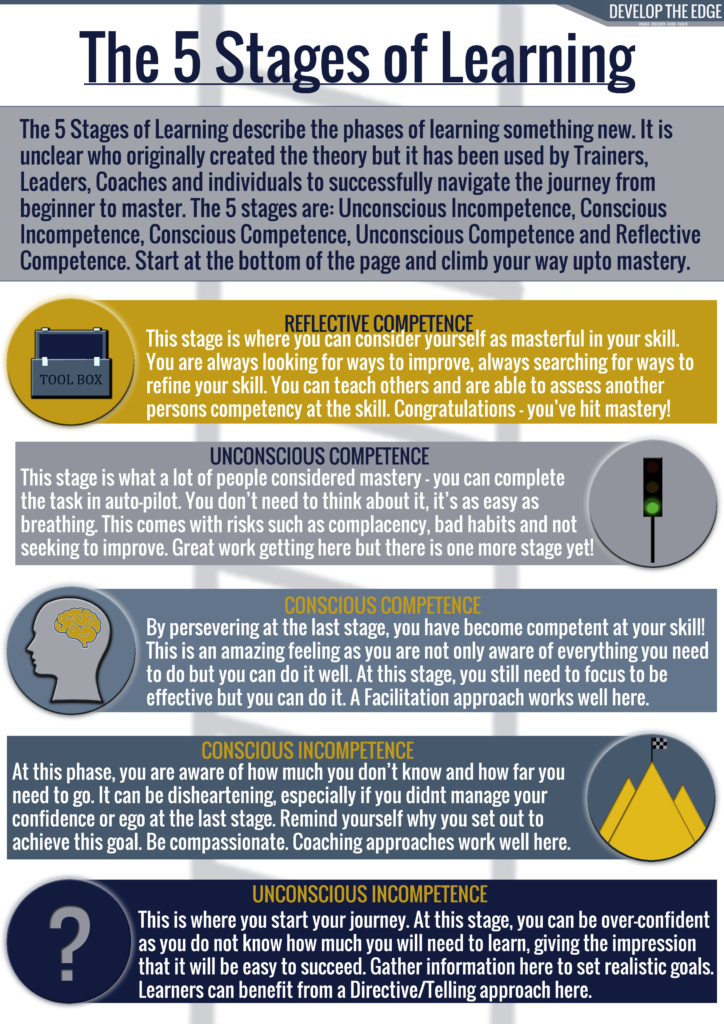


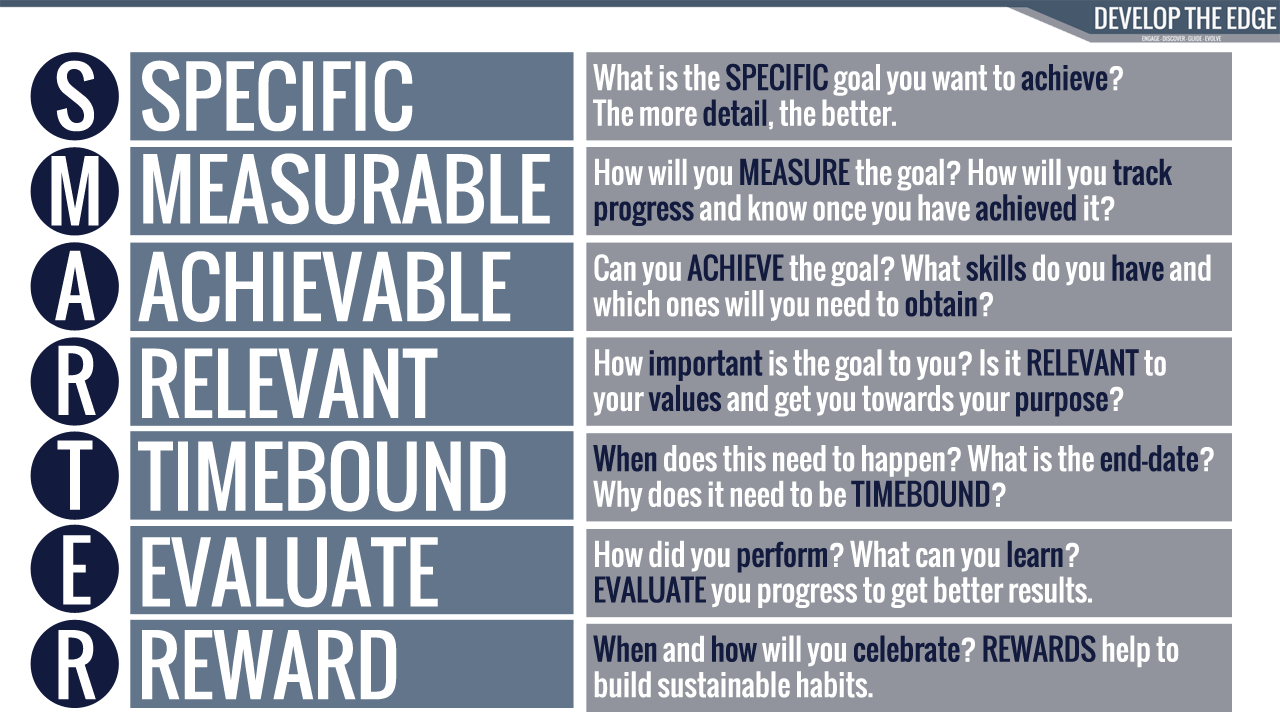

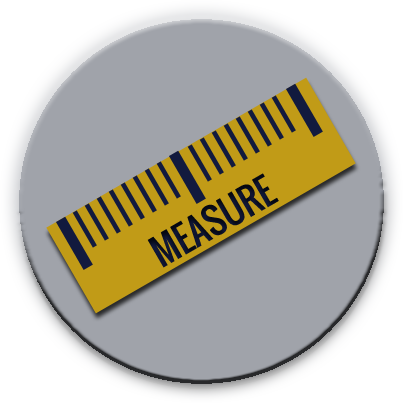
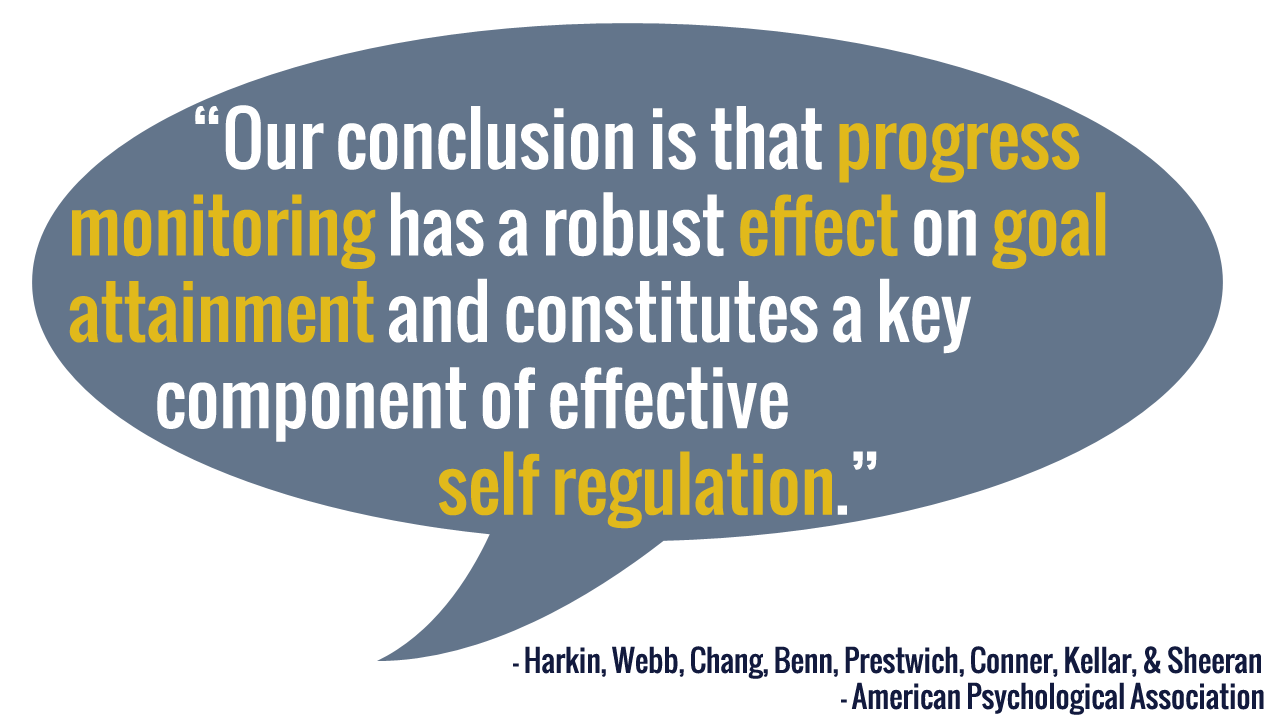

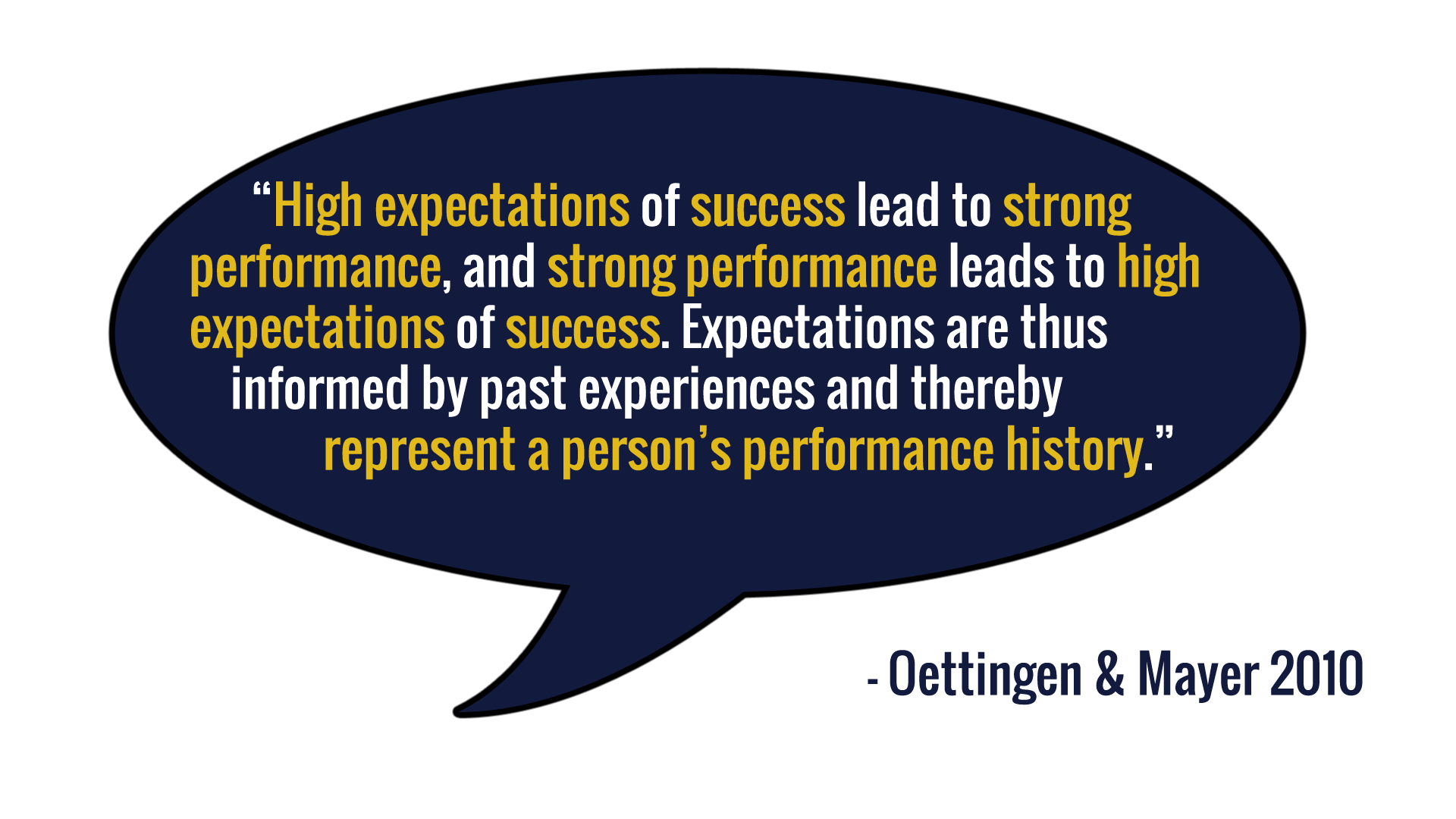

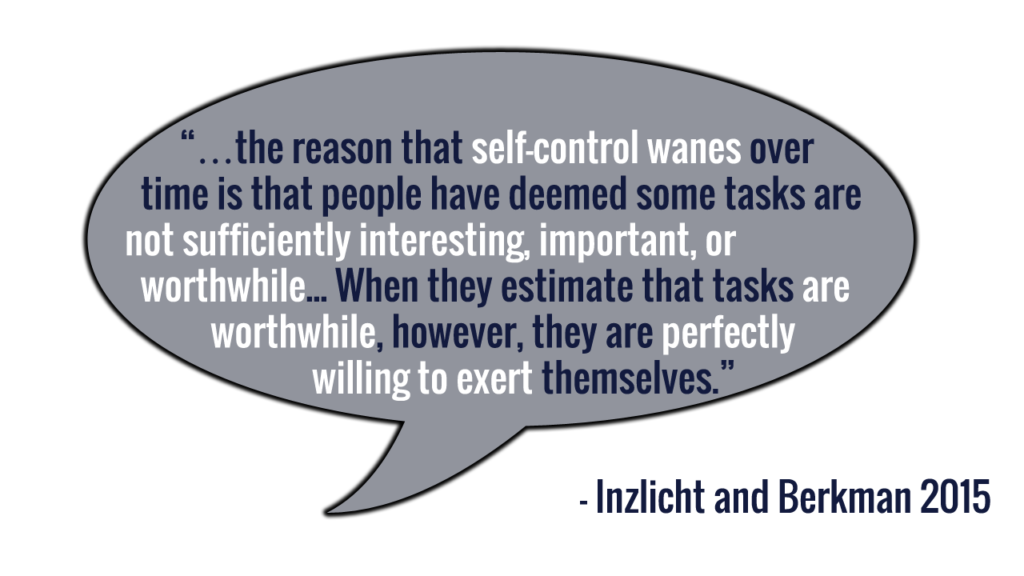


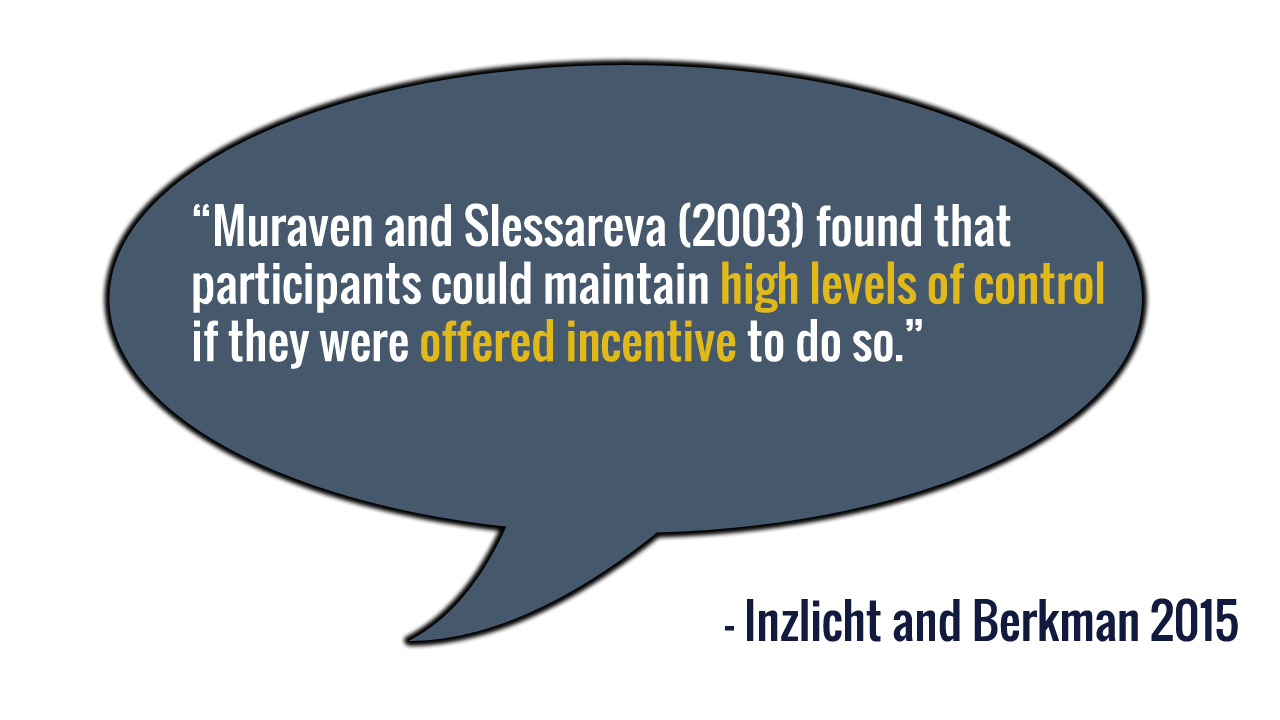
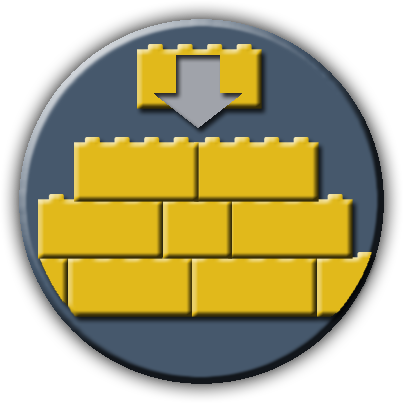












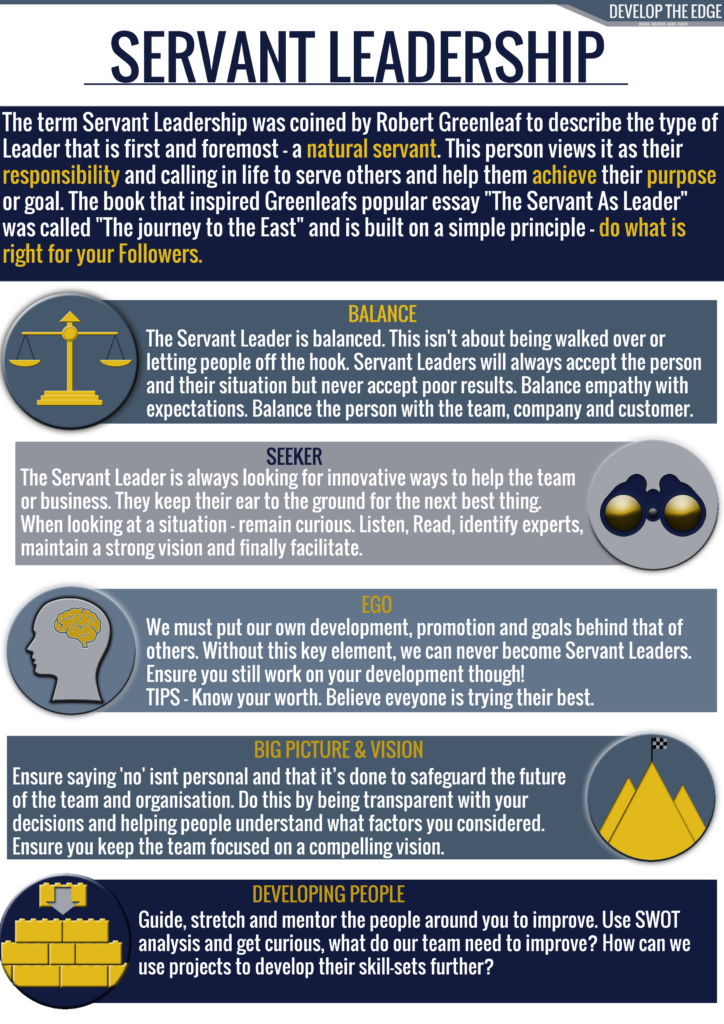
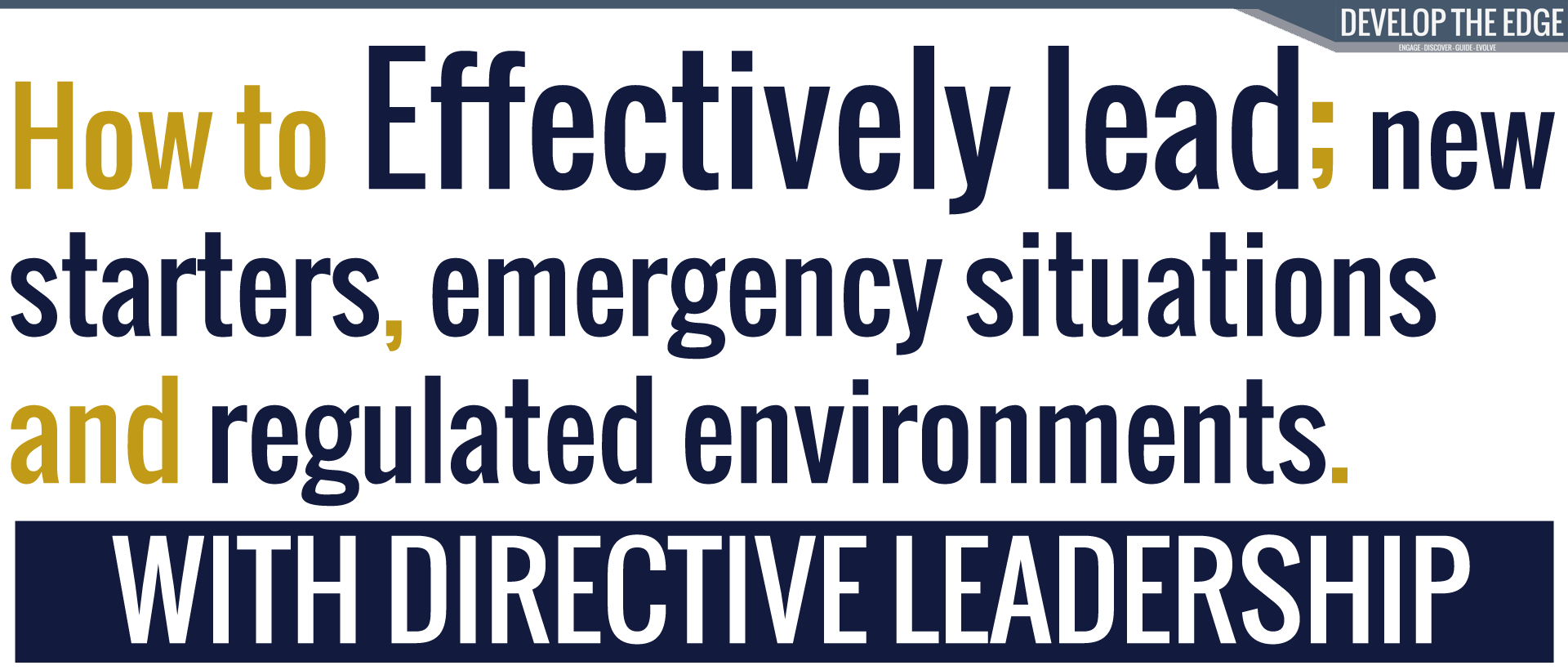
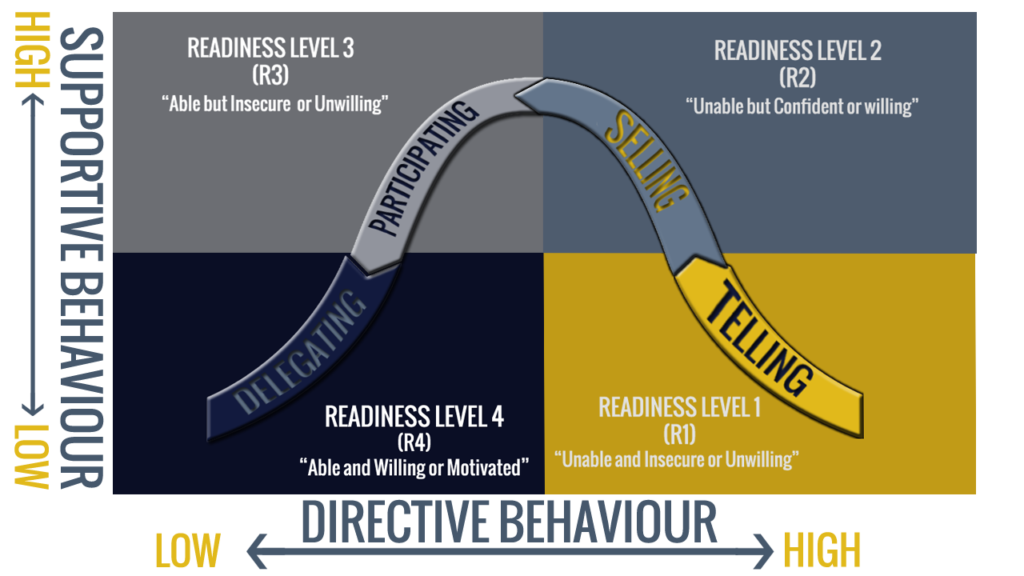
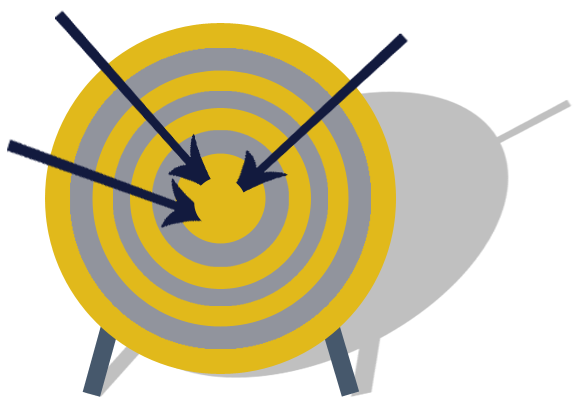




 Business example
Business example

